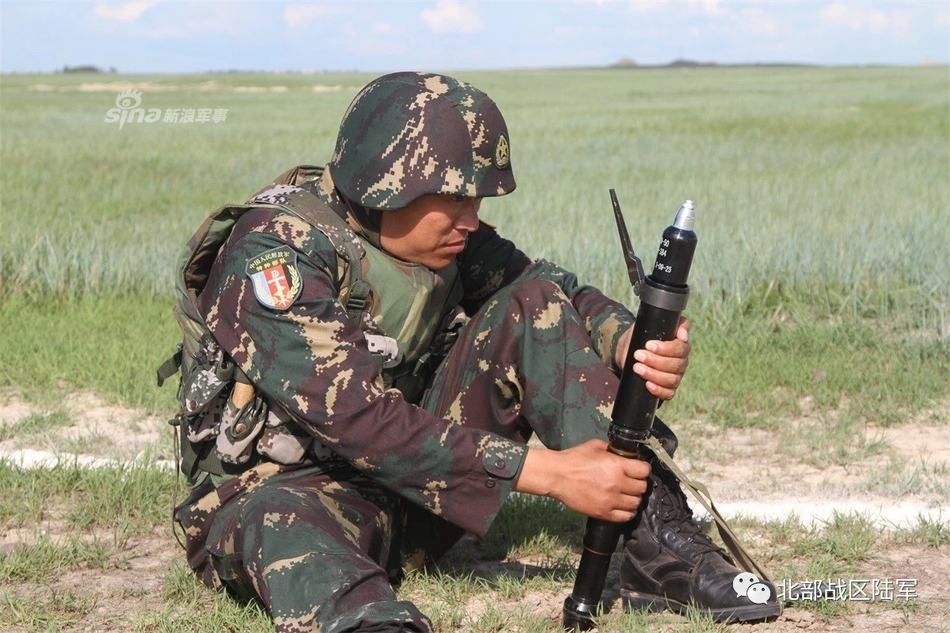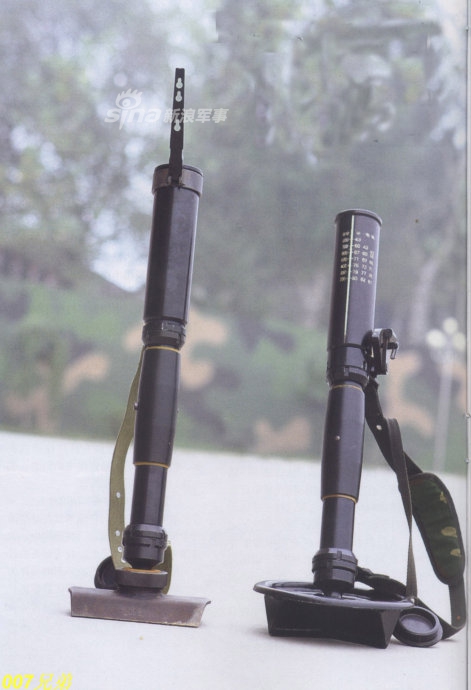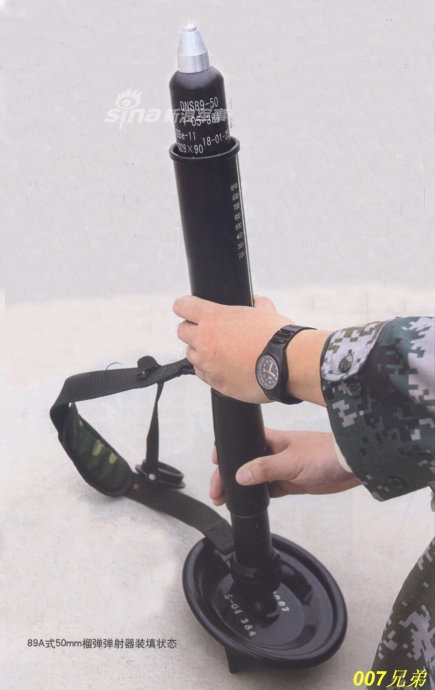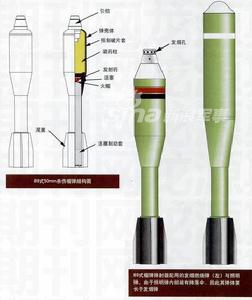-
IP addresses are NOT logged in this forum so there's no point asking. Please note that this forum is full of homophobes, racists, lunatics, schizophrenics & absolute nut jobs with a smattering of geniuses, Chinese chauvinists, Moderate Muslims and last but not least a couple of "know-it-alls" constantly sprouting their dubious wisdom. If you believe that content generated by unsavory characters might cause you offense PLEASE LEAVE NOW! Sammyboy Admin and Staff are not responsible for your hurt feelings should you choose to read any of the content here. The OTHER forum is HERE so please stop asking.
You are using an out of date browser. It may not display this or other websites correctly.
You should upgrade or use an alternative browser.
You should upgrade or use an alternative browser.
Chitchat Opium and China Military threads
- Thread starter democracy my butt
- Start date
- Joined
- Sep 22, 2008
- Messages
- 80,511
- Points
- 113
Be careful what you wish for!

32 years after, Tejas Light Combat Aircraft handed over to Indian Air Force
By: PTI | Updated: January 17, 2015 10:18 PM
The first of the indigenously-built Tejas Light Combat Aircraft (LCA) has finally been be handed over to the IAF.
 The Tejas LCA programme was initiated in 1983 to replace the ageing MiG-21s in IAF’s combat fleet but has missed several deadlines. (Tejas.gov.in)
The Tejas LCA programme was initiated in 1983 to replace the ageing MiG-21s in IAF’s combat fleet but has missed several deadlines. (Tejas.gov.in)
Thirty-two years after the project was sanctioned, the first indigenously-built Tejas Light Combat Aircraft (LCA) was today handed over by Defence Minister Manohar Parrikar to the IAF, a red letter day for Indian defence and aerospace sector.
The handover signals the start of a process of induction of the fighters, a 4.5th generation aircraft being built at home under a project which has already cost the exchequer nearly Rs 8,000 crore.
The entire project by the DRDO and Hindustan Aeronautics Limited is estimated to cost over Rs 30,000 crore.
The LCA is significant for its lighter weight and greater agility and manoeuvrability, the statement said.
The aircraft that has been handed over has got Initial Operational Clearance-II, which signifies that Tejas is airworthy in different conditions, sources said. The Final Operational Clearance (FOC) is expected by the year-end.
This version of the aircraft lacks the latest electronic warfare suite, which was integrated into one of the LCAs two weeks ago, mid-air refuelling and long-range missiles capabilities, among other things that the FOC-configuration aircraft will have.
The IOC-I was granted to the aircraft, being built by state-owned Hindustan Aeronautics Limited (HAL), in January 2011.

32 years after, Tejas Light Combat Aircraft handed over to Indian Air Force
By: PTI | Updated: January 17, 2015 10:18 PM
The first of the indigenously-built Tejas Light Combat Aircraft (LCA) has finally been be handed over to the IAF.
 The Tejas LCA programme was initiated in 1983 to replace the ageing MiG-21s in IAF’s combat fleet but has missed several deadlines. (Tejas.gov.in)
The Tejas LCA programme was initiated in 1983 to replace the ageing MiG-21s in IAF’s combat fleet but has missed several deadlines. (Tejas.gov.in)Thirty-two years after the project was sanctioned, the first indigenously-built Tejas Light Combat Aircraft (LCA) was today handed over by Defence Minister Manohar Parrikar to the IAF, a red letter day for Indian defence and aerospace sector.
The handover signals the start of a process of induction of the fighters, a 4.5th generation aircraft being built at home under a project which has already cost the exchequer nearly Rs 8,000 crore.
The entire project by the DRDO and Hindustan Aeronautics Limited is estimated to cost over Rs 30,000 crore.
The LCA is significant for its lighter weight and greater agility and manoeuvrability, the statement said.
The aircraft that has been handed over has got Initial Operational Clearance-II, which signifies that Tejas is airworthy in different conditions, sources said. The Final Operational Clearance (FOC) is expected by the year-end.
This version of the aircraft lacks the latest electronic warfare suite, which was integrated into one of the LCAs two weeks ago, mid-air refuelling and long-range missiles capabilities, among other things that the FOC-configuration aircraft will have.
The IOC-I was granted to the aircraft, being built by state-owned Hindustan Aeronautics Limited (HAL), in January 2011.
- Joined
- Aug 8, 2008
- Messages
- 6,070
- Points
- 83
Handed over meaning Hindustan Aeronautics WASH HANDS and told Modei Govt this is the BEST EFFORTS from us, can not expect any better.
Then Air Force REJECTED IT, say go fly kite with it! There is NO ENGINE TOO! The Kaveri Engine Project is REJECTED both by Air Force & Hindustan Aeronautics, nobody are fly with Mustafa Engine!
https://www.thehindu.com/news/natio...t-Kaveri-engine-for-Tejas/article14475955.ece
National
France offers help to resurrect Kaveri engine for Tejas
 PTI
PTI New Delhi, July 07, 2016 18:02 IST
Updated: July 07, 2016 18:33 IST
- Share Article
- A A A

The French agree in principle to collaborate on the engine, which lacks the real power thrust needed to fly the LCA.
France has offered to help India revive the unsuccessful Kaveri engine project for the indigenous Tejas aircraft and a host of other high-end collaborations. This is a part of the offsets in the multi-billion Euro Rafale fighter plane deal, which is now in the final stages.
Defence sources said the file on the purchase of 36 Rafale aircraft in a fly-away condition from France has been finalised and is likely to be put up before Prime Minister Narendra Modi soon.
The estimated cost of the deal is about 7.89 billion euros and entails a 50 per cent offset clause.
The French have agreed in principle to collaborate on the Kaveri engine, which lacks the real power thrust needed to fly the Tejas.
An upgraded Kaveri engine with 90 kN thrust compared to the existing 72 kN can be developed with French cooperation, which can eventually be used for Tejas, which currently uses an American engine. “The negotiations on offsets were carried out last year with DRDO and some other agencies. Once the contract for the Rafales is signed, there will be a six-month window to finalise the offset,” a source said.
The French are hoping that they will have a bigger share in the Indian defence market and see the Rafale contract as a great breakthrough. They are also hoping that India will eventually go in for more Rafale aircraft, possibly under the ‘Make in India’ route.
The agreement
Under the offset agreement, which was discussed last year, the French side has made a 30 per cent offset commitment for military aerospace research and development programmes and the rest 20 per cent for making components of Rafales here.
The offsets will be carried out by French companies Safran, Thales, MBDA and Dassault, all part of the Rafale project.
As per the initial agreed points, the French have offered to provide stealth, radar and thrust vectoring for missiles technologies besides others to DRDO and domestic defence firms. “The French government has in principle agreed on these points under the offset commitments. Once a final contract for 36 Rafale aircraft is signed, the French government will give subject-wise clearance and concrete talks will start,” a defence source said.
SUBSCRIBE TO OUR POLITICAL ANALYSIS NEWSLETTER
https://www.rediff.com/news/report/drdo-stalling-tejas-fighter-engine-iaf/20100628.htm
Rediff.com » News » IAF fumes over DRDO's attempts to resurrect Kaveri
IAF fumes over DRDO's attempts to resurrect Kaveri
Last updated on: June 28, 2010 08:48 IST
India's Tejas light fighter is failing to meet performance targets, largely because of an underpowered engine. And, the Indian Air Force (IAF) believes the Defence Research and Development Organisation (DRDO) is actively stalling the process of choosing a new engine.
A furious IAF, which urgently needs the Tejas to replace its retiring MiG-21 squadrons, has complained in writing to the Ministry of Defence (MoD). The IAF report says that even as the Aeronautical Development Agency, or ADA -- which oversees the Tejas programme -- is choosing between two powerful, modern engines from the global market, the DRDO has confused the issue by throwing up a third option: An offer to resurrect its failed Kaveri engine programme, this time in partnership with French engine-maker, Snecma.
The IAF report, currently with the highest levels of the MoD, makes two points. First, since the DRDO has been unable, for over two decades, to deliver a Kaveri engine that can power the Tejas, the ongoing procurement -- of either the General Electric (GE) F-414, or the Eurojet EJ200 engine -- should go ahead.
The IAF's second objection is even more damning for the DRDO: Snecma, the IAF charges, has already developed the heart of the engine it is offering, an uprated derivative of the M88-2 engine that powers the French Rafale fighter. The DRDO, therefore, will not co-develop the engine, but merely provide Snecma with an indigenous stamp. In reality, the Gas Turbine Research Establishment (GTRE), the DRDO laboratory that has laboured for decades on the Kaveri, will hardly participate in any "joint development".
Further, says a top IAF source, a Kaveri engine based on Snecma's new core will leave the Tejas short of performance, providing barely 83-85 Kilonewtons (KN) of maximum thrust. In contrast, the GE and Eurojet engines already short-listed for selection provide 90-96 KN, a significant advantage. The source says sneaking in the underpowered Kaveri-Snecma engine through the GTRE back door will damage the LCA project.
For the IAF, the performance of the new engine is crucial. It has agreed to accept the Tejas into service as soon as the fighter obtains its Initial Operational Clearance (IOC) in December, even though the Tejas does not yet fly, climb, turn or accelerate fast enough. The IAF's accommodation is based on a promise from the ADA that a new, more powerful engine will overcome all the Tejas' current performance shortfalls.
Senior IAF officers explain that the DRDO needs the Tejas project to endorse the Kaveri-Snecma engine because Snecma insists on a minimum assured order of 300 engines as a precondition for partnering GTRE in "joint development". Since India's futuristic Medium Combat Aircraft -- the other potential user of a Kaveri-Snecma engine -- has not yet been sanctioned, only the Tejas programme, with some 120-140 fighters planned, provides the numbers needed for satisfying Snecma.
The IAF will buy two squadrons (42 fighters) of Tejas Mark 1, which use older GE F-404 engines. In addition, five squadrons (110 fighters) of Tejas Mark 2 are planned, which will be powered by a new engine. Given that each Tejas could go through 2-3 engines during its lifetime, the LCA Mk 2 will actually need 200-300 of the new engines.
Contacted by Business Standard, the DRDO declined to comment on the subject.
The MoD is backing Kaveri-Snecma as a new engine for the Light Combat Aircraft. This was corroborated on May 13 by Defence Minister A K Antony, who told Parliament that the Kaveri "requires to be optimised for lower weight and higher performance so that it can be used for the Tejas and possibly for Indian next generation combat aircraft."
But there are mixed signals from the establishment. In the same statement, Antony also talked about the possibility of engine import. And the ADA chief, P S Subramaniam, has told Business Standard: "There are many Tejas already flying that will soon need new engines and we will use the Kaveri-Snecma engines for those. The Tejas Mark 2 will be powered by either GE F-414 or the EJ200."
According to ADA sources, both the GE and Eurojet engines have fully met the technical requirements for the Tejas Mk 2. The Eurojet EJ200 is the more modern, lighter, flexible engine and has impressed the IAF. The GE F-414 is significantly heavier, but provides more power. The Indian tender for 99 engines (plus options) demands that all engines after the first 10 be built in India.
- Joined
- Nov 29, 2016
- Messages
- 5,674
- Points
- 63
Lawyers are now busy filing suits to Milk Boeing! HUAT AH!
- Joined
- Aug 8, 2008
- Messages
- 6,070
- Points
- 83
http://video.sina.com.cn/p/mil/2019-03-18/detail-ihsxncvh3411575.d.html
天眼狙击!“神枪手”借助无人机精准狙击隐藏移动目标
Eyes sniper! "Sharpshooter" uses the drone to accurately slam the hidden moving target
MOVING & HIDDEN TARGET pinpointed by sniper! Super skill and good drone pilot tac team! The dead had no idea how he died!
天眼狙击!“神枪手”借助无人机精准狙击隐藏移动目标
Eyes sniper! "Sharpshooter" uses the drone to accurately slam the hidden moving target
MOVING & HIDDEN TARGET pinpointed by sniper! Super skill and good drone pilot tac team! The dead had no idea how he died!
- Joined
- Nov 29, 2016
- Messages
- 5,674
- Points
- 63
Can ask Ang Moh & SAF to try that! LOL@!
- Joined
- Nov 29, 2016
- Messages
- 5,674
- Points
- 63
https://hk.news.yahoo.com/戰機墜毀-為避免地面傷亡-飛行員放棄跳傘-操控飛機迫降犧牲-005900519.html
【戰機墜毀】為避免地面傷亡 飛行員放棄跳傘 操控飛機迫降犧牲

星島日報
17.4k 人追蹤
2019年3月19日 上午8:59

【戰機墜毀】為避免地面傷亡 飛行員放棄跳傘 操控飛機迫降犧牲
【星島日報報道】海軍航空兵一架戰機於本月12日在海南省樂東縣境內組織飛行訓練時失事,2名飛行員不幸犧牲,未造成地面人員傷亡。根據內地傳媒報道,其中一名犧牲的飛行員任永濤為陝西省鄠邑區甘亭街辦什村人。
報道指,任永濤是海軍航空兵飛行員,在飛機出現險情後,為避免地面人群密集區出現較大傷亡,為保護更多群眾,任永濤最終放棄跳傘逃生,選擇操控飛機迫降,犧牲自己以保護更多群眾。
任永濤於1982年8月出生,2000年8月入伍,2004年5月入黨,海軍中校軍銜,海軍一級飛行員,飛行時間逾千小時,曾參加執行多次重大演習演練安保任務,先後榮立二等功一次、三等功四次。
據此前公開報道,任永濤烈士生前曾參加2009年國慶60周年閱兵。當時與時任團長李軍共同駕駛戰機,擔任海軍空中受閱梯隊第二中隊長機。
https://hk.news.yahoo.com/戰機墜毀-為避% E5%85%8D%E5%9C%B0%E9%9D%A2%E5%82%B7%E4%BA%A1-%E9%A3%9B%E8%A1%8C%E5%93%A1%E6 %94%BE%E6%A3%84%E8%B7%B3%E5%82%98-%E6%93%8D%E6%8E%A7%E9%A3%9B%E6%A9%9F%E8% BF%AB%E9%99%8D%E7%8A%A7%E7%89%B2-005900519.html
[Fighter crash] To avoid ground casualties Pilots give up skydiving
[Sing Tao Daily]
Sing Tao Daily
17.4k person tracking
March 19, 2019, 8:59 am
[Fighter crash] To avoid ground casualties Pilots give up skydiving
[Sing Tao Daily reported] A naval aviation fighter crashed during the flight training in Ledong County, Hainan Province on the 12th of this month. Two pilots were unfortunately sacrificed and did not cause casualties on the ground. According to mainland media reports, one of the sacrificial pilots, Ren Yongtao, was a resident of Ganting Street in Gansu District, Shaanxi Province.
According to the report, Ren Yongtao is a naval aviation pilot. After the plane was in danger, in order to avoid large casualties in the crowded areas on the ground, in order to protect more people, Ren Yongtao finally gave up the parachute escape, chose to control the plane to land, and sacrificed himself to protect more people. .
Ren Yongtao was born in August 1982. He joined the army in August 2000. He joined the party in May 2004. He was the rank of naval lieutenant colonel. He was a pilot of the Navy. He had flight time of more than 1,000 hours. He participated in many major exercises and security missions. Second-class work, third-class work four times.
According to previous public reports, Ren Yongtao's martyrs participated in the military parade of the 60th National Day of 2009. At that time, he and the then leader Li Jun jointly drove the fighter plane and served as the second squadron of the naval air-reading echelon.
【戰機墜毀】為避免地面傷亡 飛行員放棄跳傘 操控飛機迫降犧牲

星島日報
17.4k 人追蹤
2019年3月19日 上午8:59

【戰機墜毀】為避免地面傷亡 飛行員放棄跳傘 操控飛機迫降犧牲
【星島日報報道】海軍航空兵一架戰機於本月12日在海南省樂東縣境內組織飛行訓練時失事,2名飛行員不幸犧牲,未造成地面人員傷亡。根據內地傳媒報道,其中一名犧牲的飛行員任永濤為陝西省鄠邑區甘亭街辦什村人。
報道指,任永濤是海軍航空兵飛行員,在飛機出現險情後,為避免地面人群密集區出現較大傷亡,為保護更多群眾,任永濤最終放棄跳傘逃生,選擇操控飛機迫降,犧牲自己以保護更多群眾。
任永濤於1982年8月出生,2000年8月入伍,2004年5月入黨,海軍中校軍銜,海軍一級飛行員,飛行時間逾千小時,曾參加執行多次重大演習演練安保任務,先後榮立二等功一次、三等功四次。
據此前公開報道,任永濤烈士生前曾參加2009年國慶60周年閱兵。當時與時任團長李軍共同駕駛戰機,擔任海軍空中受閱梯隊第二中隊長機。
https://hk.news.yahoo.com/戰機墜毀-為避% E5%85%8D%E5%9C%B0%E9%9D%A2%E5%82%B7%E4%BA%A1-%E9%A3%9B%E8%A1%8C%E5%93%A1%E6 %94%BE%E6%A3%84%E8%B7%B3%E5%82%98-%E6%93%8D%E6%8E%A7%E9%A3%9B%E6%A9%9F%E8% BF%AB%E9%99%8D%E7%8A%A7%E7%89%B2-005900519.html
[Fighter crash] To avoid ground casualties Pilots give up skydiving
[Sing Tao Daily]
Sing Tao Daily
17.4k person tracking
March 19, 2019, 8:59 am
[Fighter crash] To avoid ground casualties Pilots give up skydiving
[Sing Tao Daily reported] A naval aviation fighter crashed during the flight training in Ledong County, Hainan Province on the 12th of this month. Two pilots were unfortunately sacrificed and did not cause casualties on the ground. According to mainland media reports, one of the sacrificial pilots, Ren Yongtao, was a resident of Ganting Street in Gansu District, Shaanxi Province.
According to the report, Ren Yongtao is a naval aviation pilot. After the plane was in danger, in order to avoid large casualties in the crowded areas on the ground, in order to protect more people, Ren Yongtao finally gave up the parachute escape, chose to control the plane to land, and sacrificed himself to protect more people. .
Ren Yongtao was born in August 1982. He joined the army in August 2000. He joined the party in May 2004. He was the rank of naval lieutenant colonel. He was a pilot of the Navy. He had flight time of more than 1,000 hours. He participated in many major exercises and security missions. Second-class work, third-class work four times.
According to previous public reports, Ren Yongtao's martyrs participated in the military parade of the 60th National Day of 2009. At that time, he and the then leader Li Jun jointly drove the fighter plane and served as the second squadron of the naval air-reading echelon.
- Joined
- Nov 29, 2016
- Messages
- 5,674
- Points
- 63
This old model jet is now replaced by J-16, and it was already out of production since 2017 after using this model for last 23 years. Use by PLA Navy for coastal bombing of enemy ships originally. There are still years of remaining useful lifespan before scrap. So they just want to max out their useful lifespan.
http://news.ifeng.com/a/20170322/50811822_0.shtml
飞豹服役23年后停产,这款战机成仅次于歼20新宠
2017年03月22日 06:52:46
来源:凤凰号 作者:百战刀军情视点

用微信扫描二维码
分享至好友和朋友圈
502人参与 45评论
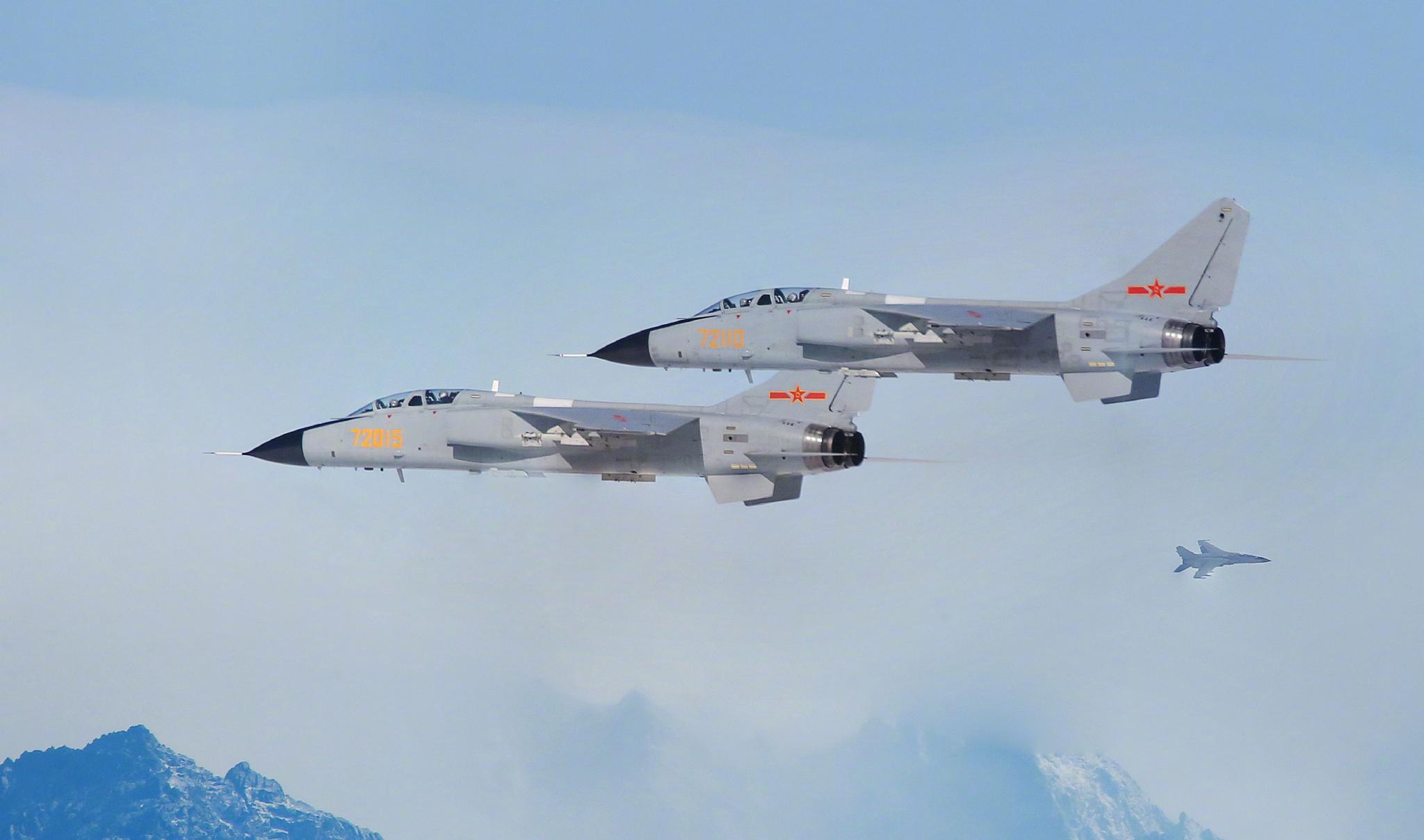
飞越天山的中国空军歼轰-7A战斗轰炸机。
中国军网3月20日发表了一篇颇为温情的文章——《春天表白季:我喜欢被霞光亲吻的“飞豹”》。自1994年首批量产型开始交付海军,1998年正式设计定型,被称为“飞豹”的歼轰-7/7A战斗轰炸机至今在空军、海军航空兵部队已装备近270架。这款我国自主研发的双发串列双座超音速战斗轰炸机航程远、载弹量大,是我军主力战术攻击机之一。但就在近日,来自“飞豹”战机生产厂家西飞的消息称,该型机已正式停产。似乎,中国军网的这篇文章在表达航空兵对“飞豹”的喜爱之余,也透露了一丝惋惜和眷恋。
中国空军正在全力打造“攻防兼备”的战略型军种,对“飞豹”这样攻击性十足的战术飞机需求很旺盛。现在传出“飞豹”停产的消息,只能说明我军已找到对地精确打击能力、空战自卫能力更为强大的多用途战斗机。这款战机自然就是源自苏-27系列双发重型第三代战斗机的3.5代“双重任务战斗机”——歼-16。同时,这也表明歼-16战斗机已然成熟,并进入全面量产“上位”阶段。
自歼轰-7B下马后,“飞豹”系列战机停产已是必然
“飞豹”战机的出现,使得中国海、空军航空兵拥有了比较现代化的对海(地)精确打击战术飞机。其1650公里的作战半径(未公布是采用何种飞行剖面的数据),最多挂载4枚YJ-83K/KD-88对舰/地攻击导弹和两中(拦射)两近(格斗)空空导弹的起飞重量(此时作战半径会缩小很多),至今在我军现役战术飞机中都名列前茅。
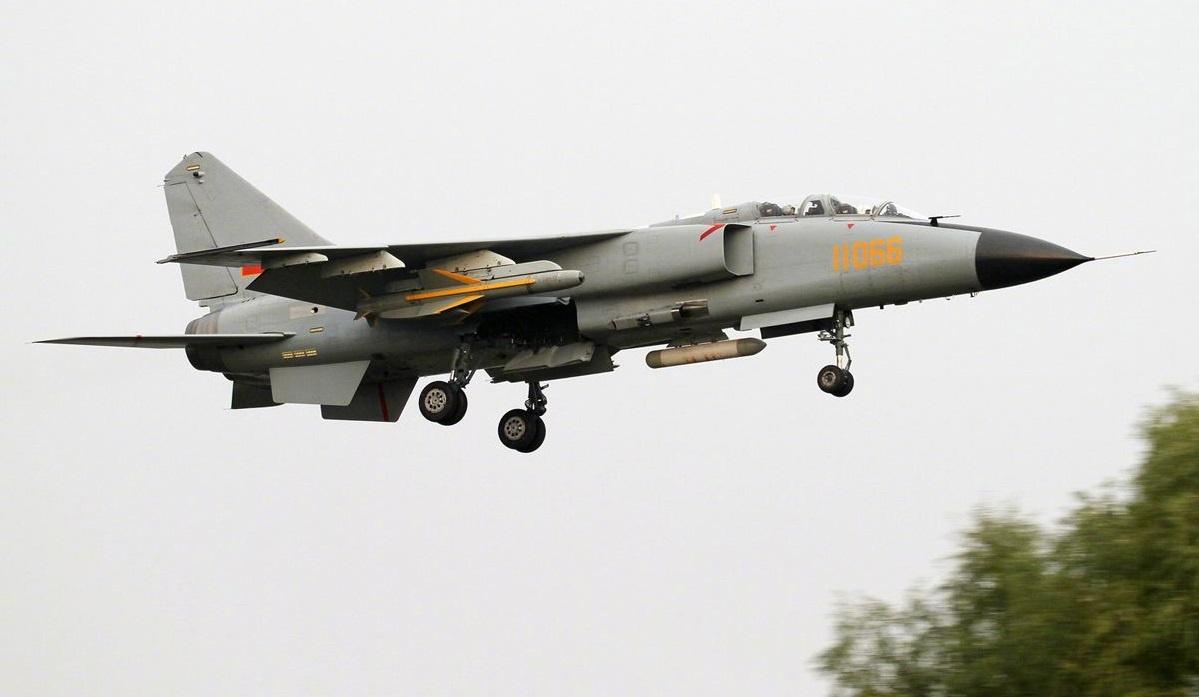
挂载对面攻击导弹和目标指示电子吊舱的歼轰-7A战斗轰炸机。
然而“飞豹”战机的短板亦较明显:一是发动机老旧,仅为上世纪60年代技术,虽然省油,但推重比只有6.5;二是低速性能较差,服役这些年来已多次因此发生机毁人亡的事故,据统计总共坠毁了超过10架;三是空战自卫能力较弱,难以突破严密高效的现代防空系统。
根据中国空军、海军攻击机未来面临的战场环境可知,执行攻击任务的战术飞机必须拥有强大的态势感知能力、良好的机动性能、不输于3-3.5代战斗机的空战能力。同时,还应具备较大作战半径,可以进行空中加油,如果能拥有一定的隐身能力则更好。
对比这些要求可知,除非对“飞豹”战机整个气动布局进行较大改动,并换装更先进的大推力发动机,否则是难以达到对机动性、空战能力等方面要求的。这恰恰是只升级了火控雷达、航电系统等机内设备,却没有大改外型,换装发动机的歼轰-7B也不能达到的要求。所以,歼轰-7B项目此前已被宣告停止,歼轰-7A战机现在也停止了生产。
目前中国空、海军航空兵共10余个旅团(还有某试训基地等单位)装备了近270架歼轰7/7A战机。这些“飞豹”仍将在未来至少10年内属于我军对面(地/海)战术打击的重要力量。其中一些“飞豹”战机还被赋予专门执行电子压制/干扰任务的职能,也就是俗称的“电子豹”。
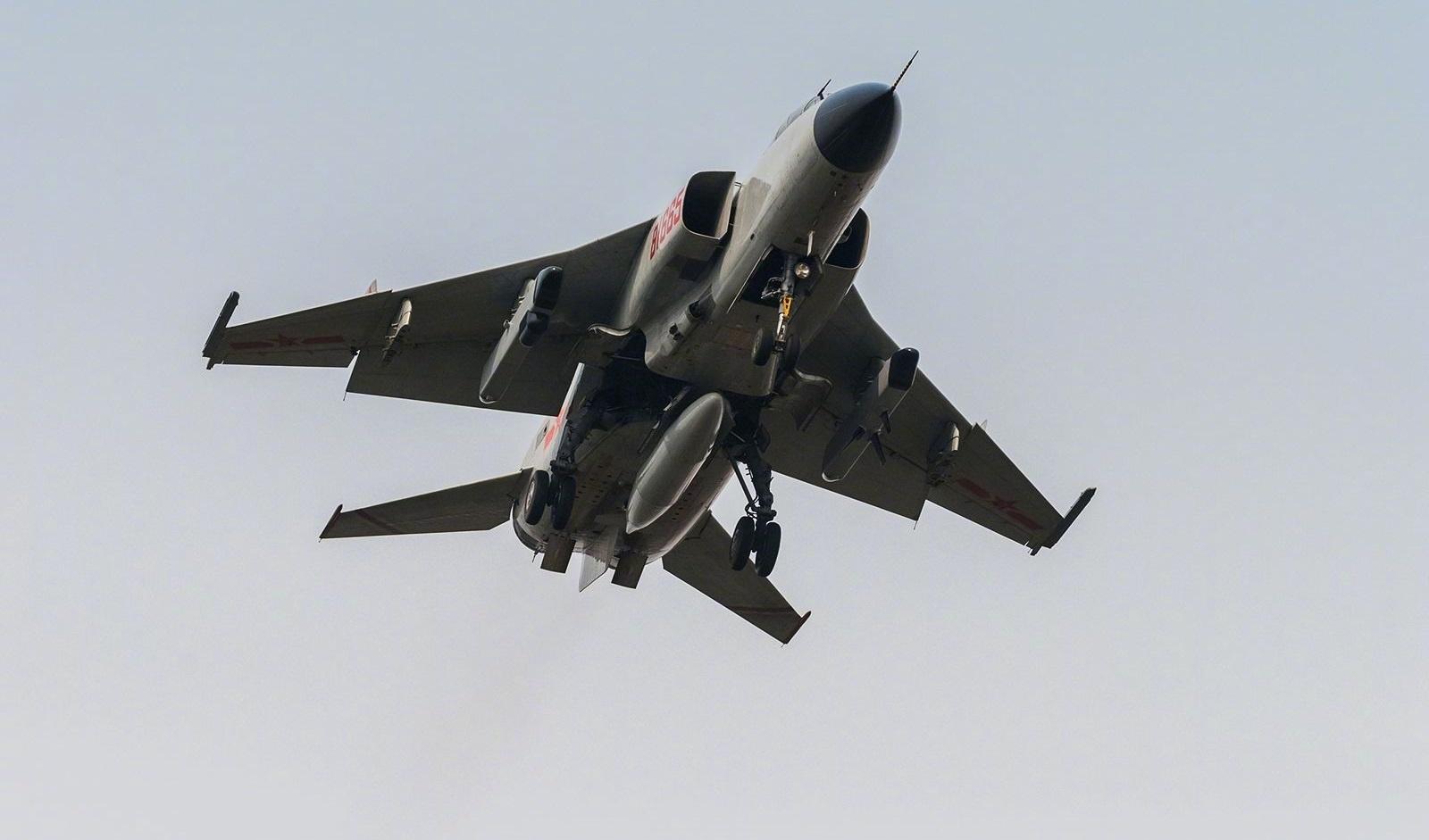
挂载两个电子吊舱和一个副油箱的海军航空兵“飞豹”战机。
预计在未来对面攻击作战中,我军会综合运用先进多用途战斗机、空射/陆基/舰射/潜射巡航导弹、弹道导弹等作为首波攻击力量,打开对方密集防空系统的缺口。然后,性能相对落后的“飞豹”战机、“电子豹”仍会有用武之地,可以从被打开的缺口进入,用鹰击-91等反辐射导弹对相对低威胁程度的敌防空目标进行“点杀”式扫除。
在敌防空系统全面瓦解后,“飞豹”战机就可以比较从容地对地面固定目标、重要移动目标展开攻击了。所以,即时不再造新机,现役的200多架“飞豹”战机仍然会被倚重,无论是对对岸,还是对防空能力较弱的敌对国家。就算只做一型扔激光/卫星制导炸弹、防区外弹药布撒器甚至“铁炸弹”的单纯战术轰炸机,“飞豹”载弹量大、航程远的优势也可以发挥得淋漓尽致。
所以,“飞豹”战斗轰炸机将起到弥补我军空对面攻击战术飞机“量”的不足的作用。很有可能的一种趋势是,“飞豹”会与越来越多进入我军服役的察打一体无人机一道,为我军对面打击火力提供“增量”。
新型“双重任务战斗机”歼-16足以扛起攻击大旗
从性能上看属于苏-30MKK战斗轰炸机的升级优化版,机体却延续自苏-27UBK/歼-11BS战斗教练机,歼-16战斗机在经历更换有源相控阵雷达(AESA)型号等再次改进后,Block 2版本已实现技术定型。此前试装备部队的歼-16 Block 1战机已在陆续回厂升级至Block 2版本,目前中国空军装备的歼-16战斗机已超过40架(约两个团的编制)。

歼-16战斗机早期原型机之一。
目前,生产厂家沈飞重中之重的任务就是保持和扩大歼-16战斗机产能,并继续进行后续改进型的研发工作。
歼-16“双重任务战斗机”装备的国产新型AESA火控雷达对10平方米RCS目标(比如F-15战斗机)的探测距离推测超过200公里,并有对空、对地、对海等多种工作模式,战场态势感知能力比较强大。正是因为拥有了由南京某所研制的这款多功能有源相控阵雷达,歼-16战斗机才拥有了在3.5代战斗机中比较强悍的对面打击和空战能力。
预计未来中国空、海军航空兵装备歼-16战斗机的团会采用20架歼-16战机加4架歼-16D(电子战)飞机的编制模式。作战半径大,可接受空中加油的歼-16/D战斗机正是中国空海军急需的有较强突防能力、精确打击能力和空战能力的多用途(双重任务)战斗机。所以,在头号“花旦”歼-20第四代隐身战斗机之后,目前最受中国空军和海军重视的国产战斗机当属歼-16系列。
在对空作战中,歼-16战斗机预计可使用PL-10红外成像格斗导弹、PL-12改进型主动雷达制导中距拦射导弹、PL15/21新型中距拦射导弹,以及新型超远程反辐射导弹。
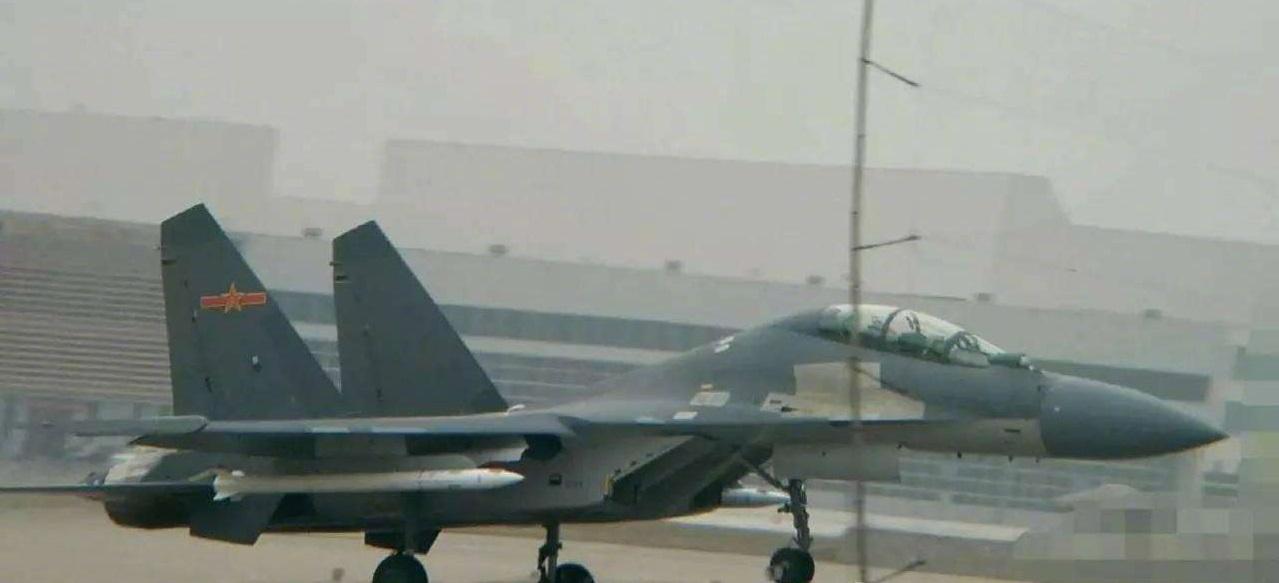
网络上出现的挂载超远程反辐射空空导弹的歼-16战斗机。
由此可见,歼-16战斗机不但可与敌机进行超视距和近距离空战,还可攻击敌预警机、加油机、电子战飞机等高价值支援飞机,对空任务延展性进一步扩大。
在对地攻击中,歼-16战斗机可在携带少量空空导弹之外,挂载较多精确制导武器,其武器挂载量至少可与苏-30MKK看齐。具体对地武器种类预计有:KD-88空对地导弹、新型隐身空对地导弹、鹰击-91反辐射导弹、新型反辐射导弹,第三代激光制导炸弹、北斗制导(滑翔)炸弹、中国版JSOW-ER(联合防区外发射武器增程型)等,可谓非常丰富。
在对海攻击中,歼-16海军型战斗机可挂载的弹药有:YJ-12改进型超音速重型反舰导弹、YJ-83K中型反舰导弹。并且不排除会出现空射型YJ-18“双速”反舰导弹供其使用。此外,更新型号隐身空射反舰导弹,甚至是中国版LRASM(美军正在研发的远程隐身反舰导弹),也有可能成为歼-16海军型的制式弹药。
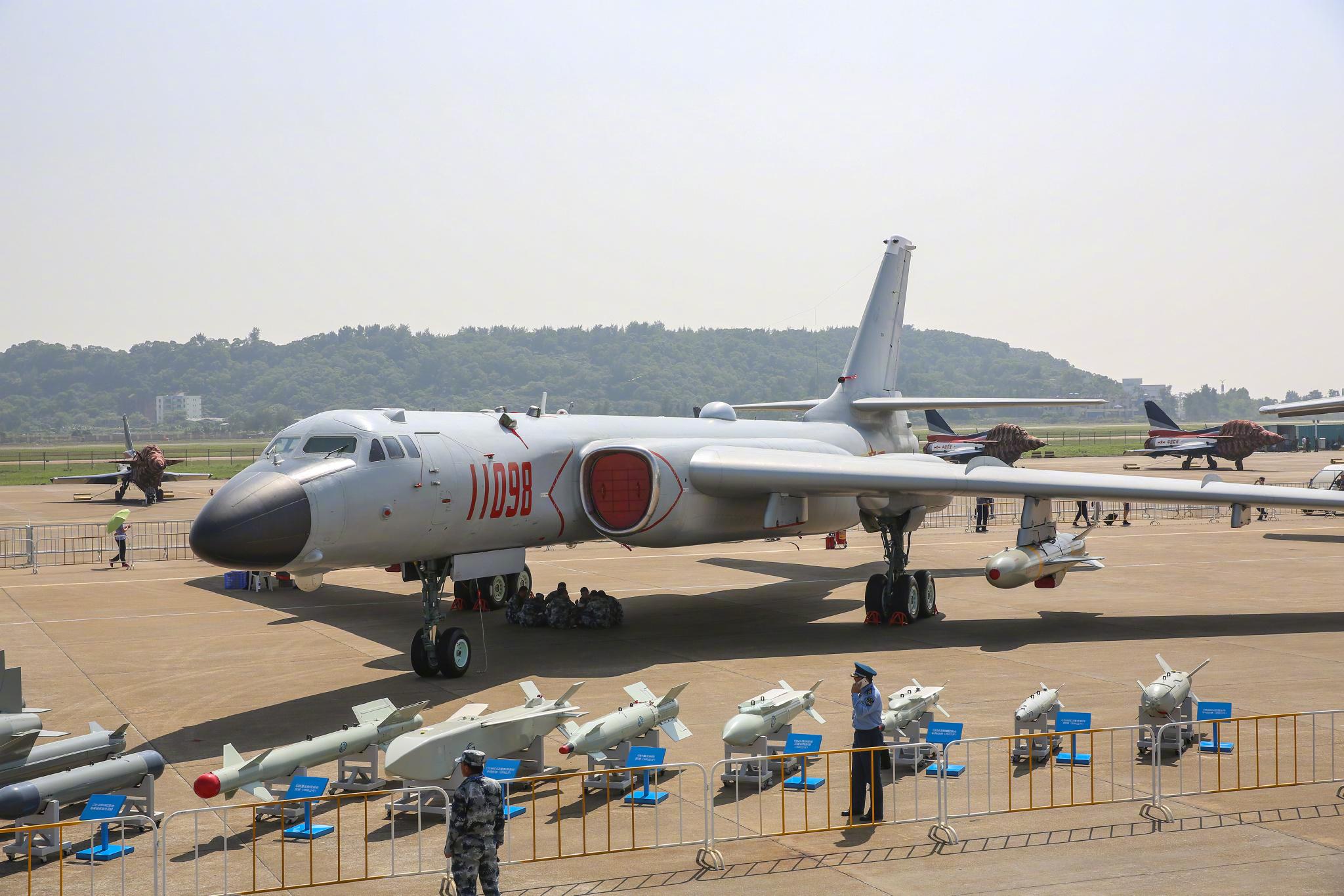
去年珠海航展展出的国产外贸型空对地精确制导武器。
歼-16战斗机可使用的对空、对面弹药种类的丰富性,恰恰是比“飞豹”性能更好的苏-30MKK战斗轰炸机都不具备的。
因此,无论对空、对地还是对海,歼-16及其电战型号战斗机不但战斗力更强,多用途能力也大为拓展,足以成为扛起攻击大旗的中国空海军新一代战术飞机。预计仅中国空军对歼-16(包括电子战型号)战斗机的需求量就会超过300架,海军的需求量应该也会在100架左右。这一数量差不多是我军目前装备的“飞豹”战机和苏-30MKK/MK2战机的总和。然而,约400架歼-16系列战机的作战效能却大大增加。中国空海军航空兵对面战术打击力量将因歼-16战斗机的批量入列而成倍增长。
而在苏-35战斗机已进入我军战斗序列后,预计未来我国军工还会借鉴苏-35的气动外形、机体结构等改动技术对歼-16战斗机进行深度改进,以进一步加强歼-16的机体强度和寿命,增大内油量,延长作战半径。届时,很可能会出现重大改进型的歼-16B型战斗机。
http://news.ifeng.com/a/20170322/50811822_0.shtml
飞豹服役23年后停产,这款战机成仅次于歼20新宠
2017年03月22日 06:52:46
来源:凤凰号 作者:百战刀军情视点

用微信扫描二维码
分享至好友和朋友圈
502人参与 45评论

飞越天山的中国空军歼轰-7A战斗轰炸机。
中国军网3月20日发表了一篇颇为温情的文章——《春天表白季:我喜欢被霞光亲吻的“飞豹”》。自1994年首批量产型开始交付海军,1998年正式设计定型,被称为“飞豹”的歼轰-7/7A战斗轰炸机至今在空军、海军航空兵部队已装备近270架。这款我国自主研发的双发串列双座超音速战斗轰炸机航程远、载弹量大,是我军主力战术攻击机之一。但就在近日,来自“飞豹”战机生产厂家西飞的消息称,该型机已正式停产。似乎,中国军网的这篇文章在表达航空兵对“飞豹”的喜爱之余,也透露了一丝惋惜和眷恋。
中国空军正在全力打造“攻防兼备”的战略型军种,对“飞豹”这样攻击性十足的战术飞机需求很旺盛。现在传出“飞豹”停产的消息,只能说明我军已找到对地精确打击能力、空战自卫能力更为强大的多用途战斗机。这款战机自然就是源自苏-27系列双发重型第三代战斗机的3.5代“双重任务战斗机”——歼-16。同时,这也表明歼-16战斗机已然成熟,并进入全面量产“上位”阶段。
自歼轰-7B下马后,“飞豹”系列战机停产已是必然
“飞豹”战机的出现,使得中国海、空军航空兵拥有了比较现代化的对海(地)精确打击战术飞机。其1650公里的作战半径(未公布是采用何种飞行剖面的数据),最多挂载4枚YJ-83K/KD-88对舰/地攻击导弹和两中(拦射)两近(格斗)空空导弹的起飞重量(此时作战半径会缩小很多),至今在我军现役战术飞机中都名列前茅。

挂载对面攻击导弹和目标指示电子吊舱的歼轰-7A战斗轰炸机。
然而“飞豹”战机的短板亦较明显:一是发动机老旧,仅为上世纪60年代技术,虽然省油,但推重比只有6.5;二是低速性能较差,服役这些年来已多次因此发生机毁人亡的事故,据统计总共坠毁了超过10架;三是空战自卫能力较弱,难以突破严密高效的现代防空系统。
根据中国空军、海军攻击机未来面临的战场环境可知,执行攻击任务的战术飞机必须拥有强大的态势感知能力、良好的机动性能、不输于3-3.5代战斗机的空战能力。同时,还应具备较大作战半径,可以进行空中加油,如果能拥有一定的隐身能力则更好。
对比这些要求可知,除非对“飞豹”战机整个气动布局进行较大改动,并换装更先进的大推力发动机,否则是难以达到对机动性、空战能力等方面要求的。这恰恰是只升级了火控雷达、航电系统等机内设备,却没有大改外型,换装发动机的歼轰-7B也不能达到的要求。所以,歼轰-7B项目此前已被宣告停止,歼轰-7A战机现在也停止了生产。
目前中国空、海军航空兵共10余个旅团(还有某试训基地等单位)装备了近270架歼轰7/7A战机。这些“飞豹”仍将在未来至少10年内属于我军对面(地/海)战术打击的重要力量。其中一些“飞豹”战机还被赋予专门执行电子压制/干扰任务的职能,也就是俗称的“电子豹”。

挂载两个电子吊舱和一个副油箱的海军航空兵“飞豹”战机。
预计在未来对面攻击作战中,我军会综合运用先进多用途战斗机、空射/陆基/舰射/潜射巡航导弹、弹道导弹等作为首波攻击力量,打开对方密集防空系统的缺口。然后,性能相对落后的“飞豹”战机、“电子豹”仍会有用武之地,可以从被打开的缺口进入,用鹰击-91等反辐射导弹对相对低威胁程度的敌防空目标进行“点杀”式扫除。
在敌防空系统全面瓦解后,“飞豹”战机就可以比较从容地对地面固定目标、重要移动目标展开攻击了。所以,即时不再造新机,现役的200多架“飞豹”战机仍然会被倚重,无论是对对岸,还是对防空能力较弱的敌对国家。就算只做一型扔激光/卫星制导炸弹、防区外弹药布撒器甚至“铁炸弹”的单纯战术轰炸机,“飞豹”载弹量大、航程远的优势也可以发挥得淋漓尽致。
所以,“飞豹”战斗轰炸机将起到弥补我军空对面攻击战术飞机“量”的不足的作用。很有可能的一种趋势是,“飞豹”会与越来越多进入我军服役的察打一体无人机一道,为我军对面打击火力提供“增量”。
新型“双重任务战斗机”歼-16足以扛起攻击大旗
从性能上看属于苏-30MKK战斗轰炸机的升级优化版,机体却延续自苏-27UBK/歼-11BS战斗教练机,歼-16战斗机在经历更换有源相控阵雷达(AESA)型号等再次改进后,Block 2版本已实现技术定型。此前试装备部队的歼-16 Block 1战机已在陆续回厂升级至Block 2版本,目前中国空军装备的歼-16战斗机已超过40架(约两个团的编制)。

歼-16战斗机早期原型机之一。
目前,生产厂家沈飞重中之重的任务就是保持和扩大歼-16战斗机产能,并继续进行后续改进型的研发工作。
歼-16“双重任务战斗机”装备的国产新型AESA火控雷达对10平方米RCS目标(比如F-15战斗机)的探测距离推测超过200公里,并有对空、对地、对海等多种工作模式,战场态势感知能力比较强大。正是因为拥有了由南京某所研制的这款多功能有源相控阵雷达,歼-16战斗机才拥有了在3.5代战斗机中比较强悍的对面打击和空战能力。
预计未来中国空、海军航空兵装备歼-16战斗机的团会采用20架歼-16战机加4架歼-16D(电子战)飞机的编制模式。作战半径大,可接受空中加油的歼-16/D战斗机正是中国空海军急需的有较强突防能力、精确打击能力和空战能力的多用途(双重任务)战斗机。所以,在头号“花旦”歼-20第四代隐身战斗机之后,目前最受中国空军和海军重视的国产战斗机当属歼-16系列。
在对空作战中,歼-16战斗机预计可使用PL-10红外成像格斗导弹、PL-12改进型主动雷达制导中距拦射导弹、PL15/21新型中距拦射导弹,以及新型超远程反辐射导弹。

网络上出现的挂载超远程反辐射空空导弹的歼-16战斗机。
由此可见,歼-16战斗机不但可与敌机进行超视距和近距离空战,还可攻击敌预警机、加油机、电子战飞机等高价值支援飞机,对空任务延展性进一步扩大。
在对地攻击中,歼-16战斗机可在携带少量空空导弹之外,挂载较多精确制导武器,其武器挂载量至少可与苏-30MKK看齐。具体对地武器种类预计有:KD-88空对地导弹、新型隐身空对地导弹、鹰击-91反辐射导弹、新型反辐射导弹,第三代激光制导炸弹、北斗制导(滑翔)炸弹、中国版JSOW-ER(联合防区外发射武器增程型)等,可谓非常丰富。
在对海攻击中,歼-16海军型战斗机可挂载的弹药有:YJ-12改进型超音速重型反舰导弹、YJ-83K中型反舰导弹。并且不排除会出现空射型YJ-18“双速”反舰导弹供其使用。此外,更新型号隐身空射反舰导弹,甚至是中国版LRASM(美军正在研发的远程隐身反舰导弹),也有可能成为歼-16海军型的制式弹药。

去年珠海航展展出的国产外贸型空对地精确制导武器。
歼-16战斗机可使用的对空、对面弹药种类的丰富性,恰恰是比“飞豹”性能更好的苏-30MKK战斗轰炸机都不具备的。
因此,无论对空、对地还是对海,歼-16及其电战型号战斗机不但战斗力更强,多用途能力也大为拓展,足以成为扛起攻击大旗的中国空海军新一代战术飞机。预计仅中国空军对歼-16(包括电子战型号)战斗机的需求量就会超过300架,海军的需求量应该也会在100架左右。这一数量差不多是我军目前装备的“飞豹”战机和苏-30MKK/MK2战机的总和。然而,约400架歼-16系列战机的作战效能却大大增加。中国空海军航空兵对面战术打击力量将因歼-16战斗机的批量入列而成倍增长。
而在苏-35战斗机已进入我军战斗序列后,预计未来我国军工还会借鉴苏-35的气动外形、机体结构等改动技术对歼-16战斗机进行深度改进,以进一步加强歼-16的机体强度和寿命,增大内油量,延长作战半径。届时,很可能会出现重大改进型的歼-16B型战斗机。

- Joined
- Aug 28, 2011
- Messages
- 3,990
- Points
- 63
https://mil.news.sina.com.cn/china/2019-03-19/doc-ihrfqzkc5210149.shtml
体重不到100斤的娇娇女如何成为了解放军特种兵(图)
体重不到100斤的娇娇女如何成为了解放军特种兵(图)

今年是张娜入伍的第7个年头,了解她的人都知道这个坚强自信的军人,初入军营时曾是一个瘦弱的娇娇女。
张娜从小对英姿飒爽的女兵十分向往,对战场的女英雄更是充满敬意。家人的不支持并没有打消张娜心底参军的“执念”。19岁那年,她通过层层考核,终于如愿接到了入伍通知书。

张娜向往的军营生活是,每天像特种兵一样跳伞、潜泳、格斗……然而在很多人眼里,她是不合适当特种兵的。当时的她身高1米65,体重不足50公斤,先天瘦弱的条件,让她失去了加入特种兵的机会。
失望的张娜依旧不灰心,每次走过训练场,她总是望着特训队的战士出神。机会终于来了,一次连队下发战区陆军兵种班长战斗骨干集训选拔女队员的通知,让张娜眼前一亮,她决定报名参加海选。在海选中,张娜凭借耐力好的优势,在三公里越野的考核中赢得了参军比武的入场券。
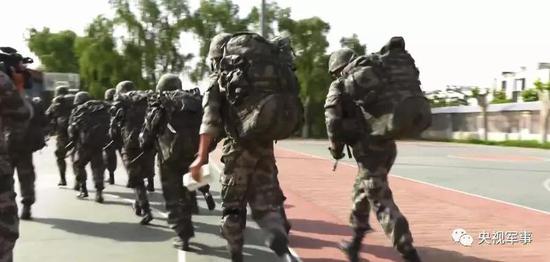
然而,张娜没有想到的是,海选上来的女队员们都是优中选优的高手,与她们相比自己的身高体重和军事素质都不占优势。第一天训练结束后,她就被淘汰到了待选班,这样的结果似乎正在验证她身上那张瘦弱的“标签”。
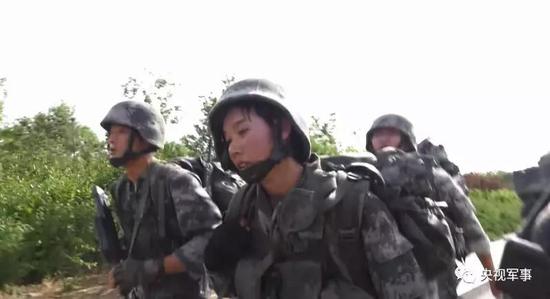
虽然成为了候补队员,张娜仍然想要证明自己。她每天训练12个小时,全程不休息,她还在自己的背包里塞满了砖头,稍有喘息的时间就去练平板支撑。即使受伤了,也绝不放慢脚步,她在咬牙等待第二次考核。如今再次提起那段时间的经历,张娜还是满眼的泪水,那种痛苦真的不是一般人能忍受得了的。

终于,张娜成了正式队员,可更大的挑战还在后面。2017年7月,张娜和战友们转战南昌集训场。当时南昌的室外温度接近40摄氏度,张娜和战友们要在毫无遮挡的情况下,进行全天17个小时的连续训练,体力和心理都几乎达到极限。

更要命的是,摆在她面前的是一个个没有见过更没有试过的障碍。可是越难攻克的项目,越是让她充满斗志。她想让所有人都知道,这个瘦小的身体里,也可以迸发强大的力量

最终战区大比武中,张娜所在的团体战胜了一大批劲敌,取得了“定向越野”和“最佳射手”两个项目的团体第一名。
Https://mil.news.sina.com.cn/china/2019-03-19/doc-ihrfqzkc5210149.shtml
How does a petite woman who weighs less than 100 pounds become a special soldier of the PLA (figure)
How does a petite woman who weighs less than 100 pounds become a special soldier of the PLA (figure)
This year is the seventh year of Zhang Na's enlistment. Everyone who knows her knows this strong and confident soldier. When she first entered the military camp, she was a thin and delicate woman.
Zhang Na was very yearning for the heroic female soldier, and she was full of respect for the heroine on the battlefield. The lack of support from the family did not dispel the "obsession" of Zhang Na’s heart. At the age of 19, she passed the assessment and finally received the notice of enlistment.
Zhang Na’s long-awaited military camp life is like skydiving, snorkeling, and fighting like a special soldier... However, in the eyes of many people, she is not suitable as a special soldier. At that time, she was 1.65 meters tall and weighed less than 50 kilograms. The condition of congenital thinness made her lose the opportunity to join the special forces.
Disappointed Zhang Na is still not discouraged. Every time she walks through the training ground, she always looks at the soldiers of the special training team. The opportunity finally came, and a company issued a notice from the army squad leader of the war zone to train and select female players. Zhang Na’s eyes brightened and she decided to sign up for the election. In the sea election, Zhang Na won the admission ticket for the competition in the three-kilometer off-road assessment with the advantage of good endurance.
However, what Zhang Na didn't think was that the female players who were elected by the sea were all superior players, and their height, weight and military quality were not superior to them. After the first day of training, she was eliminated into the waiting class, and the result seems to be verifying the thin "tag" on her body.
Although he became an alternate member, Zhang Na still wants to prove herself. She trains for 12 hours a day, and does not rest during the whole process. She is still stuffing her backpack with bricks and taking a little breathing time to practice the tablet support. Even if she is injured, she will never slow down. She is biting her teeth and waiting for the second assessment. Now that I have mentioned the experience of that time again, Zhang Na is still full of tears. The pain is really not something that most people can bear.
Finally, Zhang Na became an official member, but the bigger challenge is still behind. In July 2017, Zhang Na and her comrades fought in Nanchang Training Ground. At that time, the outdoor temperature in Nanchang was close to 40 degrees Celsius. Zhang Na and his comrades had to carry out 17 hours of continuous training throughout the day without any cover. The physical strength and psychology almost reached the limit.
Even worse, what is placed in front of her is an obstacle that has never been seen before. However, the more difficult it is to overcome the project, the more she is full of fighting spirit. She wants everyone to know that this thin body can also express powerful power.
In the final battlefield, Zhang Na’s group defeated a large number of rivals and won the first place in the group of “Oriental Off-Road” and “Best Shooter”.
体重不到100斤的娇娇女如何成为了解放军特种兵(图)
体重不到100斤的娇娇女如何成为了解放军特种兵(图)

今年是张娜入伍的第7个年头,了解她的人都知道这个坚强自信的军人,初入军营时曾是一个瘦弱的娇娇女。
张娜从小对英姿飒爽的女兵十分向往,对战场的女英雄更是充满敬意。家人的不支持并没有打消张娜心底参军的“执念”。19岁那年,她通过层层考核,终于如愿接到了入伍通知书。

张娜向往的军营生活是,每天像特种兵一样跳伞、潜泳、格斗……然而在很多人眼里,她是不合适当特种兵的。当时的她身高1米65,体重不足50公斤,先天瘦弱的条件,让她失去了加入特种兵的机会。
失望的张娜依旧不灰心,每次走过训练场,她总是望着特训队的战士出神。机会终于来了,一次连队下发战区陆军兵种班长战斗骨干集训选拔女队员的通知,让张娜眼前一亮,她决定报名参加海选。在海选中,张娜凭借耐力好的优势,在三公里越野的考核中赢得了参军比武的入场券。

然而,张娜没有想到的是,海选上来的女队员们都是优中选优的高手,与她们相比自己的身高体重和军事素质都不占优势。第一天训练结束后,她就被淘汰到了待选班,这样的结果似乎正在验证她身上那张瘦弱的“标签”。

虽然成为了候补队员,张娜仍然想要证明自己。她每天训练12个小时,全程不休息,她还在自己的背包里塞满了砖头,稍有喘息的时间就去练平板支撑。即使受伤了,也绝不放慢脚步,她在咬牙等待第二次考核。如今再次提起那段时间的经历,张娜还是满眼的泪水,那种痛苦真的不是一般人能忍受得了的。

终于,张娜成了正式队员,可更大的挑战还在后面。2017年7月,张娜和战友们转战南昌集训场。当时南昌的室外温度接近40摄氏度,张娜和战友们要在毫无遮挡的情况下,进行全天17个小时的连续训练,体力和心理都几乎达到极限。

更要命的是,摆在她面前的是一个个没有见过更没有试过的障碍。可是越难攻克的项目,越是让她充满斗志。她想让所有人都知道,这个瘦小的身体里,也可以迸发强大的力量

最终战区大比武中,张娜所在的团体战胜了一大批劲敌,取得了“定向越野”和“最佳射手”两个项目的团体第一名。
Https://mil.news.sina.com.cn/china/2019-03-19/doc-ihrfqzkc5210149.shtml
How does a petite woman who weighs less than 100 pounds become a special soldier of the PLA (figure)
How does a petite woman who weighs less than 100 pounds become a special soldier of the PLA (figure)
This year is the seventh year of Zhang Na's enlistment. Everyone who knows her knows this strong and confident soldier. When she first entered the military camp, she was a thin and delicate woman.
Zhang Na was very yearning for the heroic female soldier, and she was full of respect for the heroine on the battlefield. The lack of support from the family did not dispel the "obsession" of Zhang Na’s heart. At the age of 19, she passed the assessment and finally received the notice of enlistment.
Zhang Na’s long-awaited military camp life is like skydiving, snorkeling, and fighting like a special soldier... However, in the eyes of many people, she is not suitable as a special soldier. At that time, she was 1.65 meters tall and weighed less than 50 kilograms. The condition of congenital thinness made her lose the opportunity to join the special forces.
Disappointed Zhang Na is still not discouraged. Every time she walks through the training ground, she always looks at the soldiers of the special training team. The opportunity finally came, and a company issued a notice from the army squad leader of the war zone to train and select female players. Zhang Na’s eyes brightened and she decided to sign up for the election. In the sea election, Zhang Na won the admission ticket for the competition in the three-kilometer off-road assessment with the advantage of good endurance.
However, what Zhang Na didn't think was that the female players who were elected by the sea were all superior players, and their height, weight and military quality were not superior to them. After the first day of training, she was eliminated into the waiting class, and the result seems to be verifying the thin "tag" on her body.
Although he became an alternate member, Zhang Na still wants to prove herself. She trains for 12 hours a day, and does not rest during the whole process. She is still stuffing her backpack with bricks and taking a little breathing time to practice the tablet support. Even if she is injured, she will never slow down. She is biting her teeth and waiting for the second assessment. Now that I have mentioned the experience of that time again, Zhang Na is still full of tears. The pain is really not something that most people can bear.
Finally, Zhang Na became an official member, but the bigger challenge is still behind. In July 2017, Zhang Na and her comrades fought in Nanchang Training Ground. At that time, the outdoor temperature in Nanchang was close to 40 degrees Celsius. Zhang Na and his comrades had to carry out 17 hours of continuous training throughout the day without any cover. The physical strength and psychology almost reached the limit.
Even worse, what is placed in front of her is an obstacle that has never been seen before. However, the more difficult it is to overcome the project, the more she is full of fighting spirit. She wants everyone to know that this thin body can also express powerful power.
In the final battlefield, Zhang Na’s group defeated a large number of rivals and won the first place in the group of “Oriental Off-Road” and “Best Shooter”.
- Joined
- Nov 29, 2016
- Messages
- 5,674
- Points
- 63
Got double shooting medals for Special Combat contest, Lon Pray Pray! One bullet can produce one Aloysius Pang!
- Joined
- Nov 29, 2016
- Messages
- 5,674
- Points
- 63
https://mil.news.sina.com.cn/world/2019-03-19/doc-ihsxncvh3683192.shtml
印度海军航母编队抵近巴基斯坦 已受命转入实战模式
印度海军航母编队抵近巴基斯坦 已受命转入实战模式
88
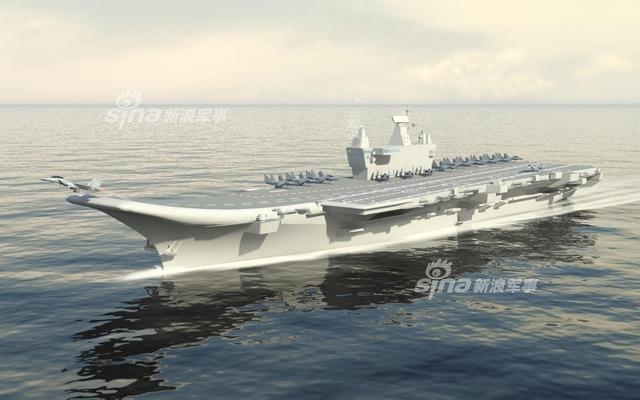
作用只是提供船厂就业!印度航母可能就是只纸老虎1/16
查看原图图集模式
据国家利益网站1月19日消息:虽然,印度的国产第一艘航母还没有完工服役,但是印度海军已经提出了建造第三艘航母的建议,暂时名为维沙尔号;印度计划该航母在在本世纪20年代后期服役。6.5万吨的维沙尔号将比印度海军现在唯一航母超日王号以及即将在2018年(实际上可能会拖到2020年)晚些时候投入使用的国内建造的维克兰特(即第二艘维克兰特)大得多。(来源:烽火军事)
















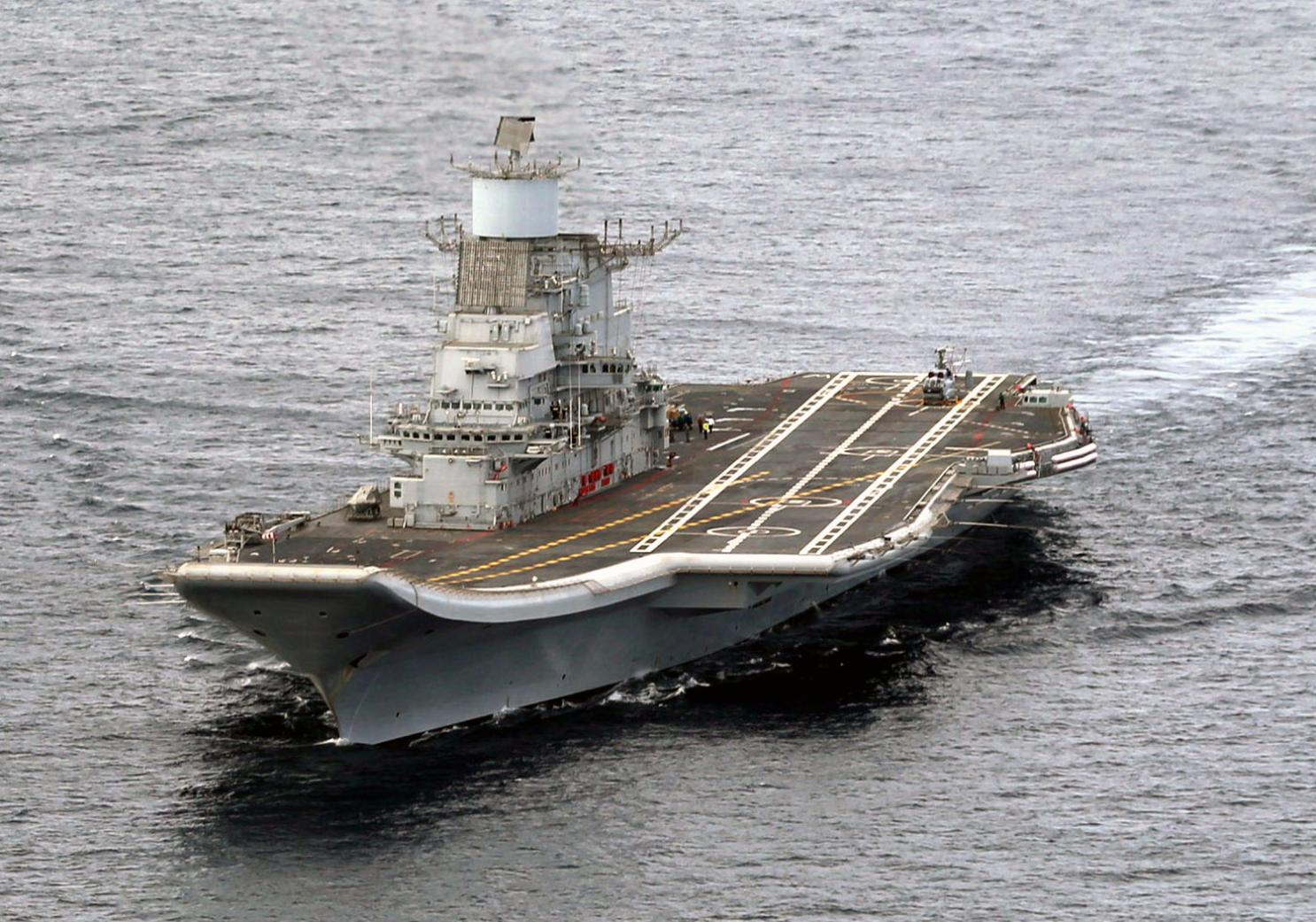
印度海军的“维克拉马迪亚”号航空
[环球时报报道 驻印度特约记者 王伟]据印度媒体18日报道,莫迪政府日前将包括航母战斗群在内的海军力量部署到阿拉伯海北部地区。有分析人士认为,在印巴关系紧张升级的背景下,此举意在震慑巴基斯坦,并为印度人民党在大选前争取民意。
据新德里电视台18日报道,印度海军17日罕见发表声明,称在“穆罕默德军”袭击事件发生后,原定从1月7日至3月10日的“Tropex 19”联合军演被中途叫停,印度海军迅速调整战略部署,将参加军演的海军力量调往阿拉伯海北部区域,其中包括“维克拉马迪亚”号航空母舰战斗群、“查克拉”号核潜艇、60余艘军舰和近80架飞机。据印度《经济时报》报道,随着印巴紧张关系的不断升级,印度海军命令参演的主要作战部队迅速从演习模式转为实战模式。印度海军在声明中重申,印度有能力在任何情况下“预防、阻止和打击来自巴基斯坦方面的海上冒险行为”,新德里“强大的优势”迫使巴海军不得不留在莫克兰海岸附近,不敢在公海活动。
《印度斯坦时报》援引军事专家和印度海军官员的话报道称,此次军事部署是2001年印度国会大厦遭到恐怖袭击以来规模最大的一次。有分析认为,印度航母编队陈兵阿拉伯海海域,其舰载战斗机的作战半径可以轻松覆盖巴基斯坦南部战略要冲。一旦印巴未来爆发军事冲突,这将为印度争取更大军事优势。
印度分析人士对《环球时报》记者表示,此前印度人民党对巴示强力度不足,导致民众不满。事实上,印控克什米尔地区在遭到“穆罕默德军”袭击后,印度空军越界轰炸“恐怖分子据点”在先,与巴基斯坦军机空战于后,除了一名飞行员被俘后失而复得外,印度军方并没有占到什么大便宜,民间舆论压力不可谓不大。印度军方此时罕见发表措辞严厉的声明,同时对外公布调整后的新军事部署,不排除这是在大选前回应和挽救民意之举。▲
点击进入专题:
每日军情TOP5
Https://mil.news.sina.com.cn/world/2019-03-19/doc-ihsxncvh3683192.shtml
Indian naval aircraft carrier formation arrived in Pakistan has been assigned to the actual combat mode
Indian naval aircraft carrier formation arrived in Pakistan has been assigned to the actual combat mode
88
The role is only to provide the shipyard employment! Indian aircraft carrier may be a paper tiger 1/16
View original image gallery mode
According to the National Interests website on January 19th: Although India’s first domestic aircraft carrier has not yet completed its service, the Indian Navy has proposed a third aircraft carrier, temporarily called the Vishal; India plans the aircraft carrier. In service in the late 1920s. The 65,000-ton Vishal will be built in the domestic Navy of the Indian Navy, the only carrier of the Indian Navy, and the Vickers (that is, the first to be put into use in 2018 (which may actually be towed until 2020). The two Vickers are much larger. (Source: Bonfire Military)
Air Force of the Indian Navy
[Global Times Report Special correspondent in India Wang Wei] According to Indian media reports on the 18th, the Modi government recently deployed naval forces including the aircraft carrier battle group to the northern part of the Arabian Sea. Some analysts believe that in the context of the escalating tension between India and Pakistan, this move is intended to shock Pakistan and win public opinion for the Bharatiya Janata Party before the election.
According to a report by New Delhi TV on the 18th, the Indian Navy issued a rare statement on the 17th, saying that after the "Muhammad Army" attack, the "Tropex 19" joint military exercise originally scheduled from January 7 to March 10 was stopped midway. The Indian Navy quickly adjusted its strategic deployment and transferred the naval forces participating in the military exercise to the northern part of the Arabian Sea, including the "Vikramadia" aircraft carrier battle group, the "Chakra" nuclear submarine, more than 60 warships and nearly 80 Aircraft. According to the Indian Economic Times, as the tension between India and Pakistan continued to escalate, the main combat forces that the Indian Navy ordered to participate in quickly changed from the exercise mode to the actual combat mode. The Indian Navy reiterated in its statement that India has the ability to "prevent, prevent and combat maritime risk-taking from Pakistan" under any circumstances. New Delhi's "strong advantage" forced the Pakistani navy to stay near the coast of Moklan. Activities on the high seas.
The Hindustan Times quoted military experts and Indian naval officials as saying that the military deployment was the largest since the terrorist attacks on the Indian Parliament Building in 2001. Some analysts believe that the Indian aircraft carrier Chen Bing in the Arabian Sea, the operational radius of its carrier-based fighters can easily cover the strategic thrust of southern Pakistan. Once India and Pakistan have a military conflict in the future, this will give India a greater military advantage.
Indian analysts told the Global Times that the Indian People’s Party had been underpowered by the Indian people’s party and caused dissatisfaction among the people. In fact, after the "Muhammad Army" attack in the Indian-controlled Kashmir region, the Indian Air Force bombed the "terrorist stronghold" in the first place. After the air battle with the Pakistani military aircraft, except for a pilot who was captured and recovered, the Indian military There is no big bargain, and the pressure of public opinion is not too big. At this time, the Indian military rarely issued a harshly worded statement, and at the same time announced the revised new military deployment. It is not excluded that this is a response to the public opinion before the election. ▲
Click to enter the topic:
Daily military TOP5
印度海军航母编队抵近巴基斯坦 已受命转入实战模式
印度海军航母编队抵近巴基斯坦 已受命转入实战模式
88

作用只是提供船厂就业!印度航母可能就是只纸老虎1/16
查看原图图集模式
据国家利益网站1月19日消息:虽然,印度的国产第一艘航母还没有完工服役,但是印度海军已经提出了建造第三艘航母的建议,暂时名为维沙尔号;印度计划该航母在在本世纪20年代后期服役。6.5万吨的维沙尔号将比印度海军现在唯一航母超日王号以及即将在2018年(实际上可能会拖到2020年)晚些时候投入使用的国内建造的维克兰特(即第二艘维克兰特)大得多。(来源:烽火军事)

















印度海军的“维克拉马迪亚”号航空
[环球时报报道 驻印度特约记者 王伟]据印度媒体18日报道,莫迪政府日前将包括航母战斗群在内的海军力量部署到阿拉伯海北部地区。有分析人士认为,在印巴关系紧张升级的背景下,此举意在震慑巴基斯坦,并为印度人民党在大选前争取民意。
据新德里电视台18日报道,印度海军17日罕见发表声明,称在“穆罕默德军”袭击事件发生后,原定从1月7日至3月10日的“Tropex 19”联合军演被中途叫停,印度海军迅速调整战略部署,将参加军演的海军力量调往阿拉伯海北部区域,其中包括“维克拉马迪亚”号航空母舰战斗群、“查克拉”号核潜艇、60余艘军舰和近80架飞机。据印度《经济时报》报道,随着印巴紧张关系的不断升级,印度海军命令参演的主要作战部队迅速从演习模式转为实战模式。印度海军在声明中重申,印度有能力在任何情况下“预防、阻止和打击来自巴基斯坦方面的海上冒险行为”,新德里“强大的优势”迫使巴海军不得不留在莫克兰海岸附近,不敢在公海活动。
《印度斯坦时报》援引军事专家和印度海军官员的话报道称,此次军事部署是2001年印度国会大厦遭到恐怖袭击以来规模最大的一次。有分析认为,印度航母编队陈兵阿拉伯海海域,其舰载战斗机的作战半径可以轻松覆盖巴基斯坦南部战略要冲。一旦印巴未来爆发军事冲突,这将为印度争取更大军事优势。
印度分析人士对《环球时报》记者表示,此前印度人民党对巴示强力度不足,导致民众不满。事实上,印控克什米尔地区在遭到“穆罕默德军”袭击后,印度空军越界轰炸“恐怖分子据点”在先,与巴基斯坦军机空战于后,除了一名飞行员被俘后失而复得外,印度军方并没有占到什么大便宜,民间舆论压力不可谓不大。印度军方此时罕见发表措辞严厉的声明,同时对外公布调整后的新军事部署,不排除这是在大选前回应和挽救民意之举。▲
点击进入专题:
每日军情TOP5
Https://mil.news.sina.com.cn/world/2019-03-19/doc-ihsxncvh3683192.shtml
Indian naval aircraft carrier formation arrived in Pakistan has been assigned to the actual combat mode
Indian naval aircraft carrier formation arrived in Pakistan has been assigned to the actual combat mode
88
The role is only to provide the shipyard employment! Indian aircraft carrier may be a paper tiger 1/16
View original image gallery mode
According to the National Interests website on January 19th: Although India’s first domestic aircraft carrier has not yet completed its service, the Indian Navy has proposed a third aircraft carrier, temporarily called the Vishal; India plans the aircraft carrier. In service in the late 1920s. The 65,000-ton Vishal will be built in the domestic Navy of the Indian Navy, the only carrier of the Indian Navy, and the Vickers (that is, the first to be put into use in 2018 (which may actually be towed until 2020). The two Vickers are much larger. (Source: Bonfire Military)
Air Force of the Indian Navy
[Global Times Report Special correspondent in India Wang Wei] According to Indian media reports on the 18th, the Modi government recently deployed naval forces including the aircraft carrier battle group to the northern part of the Arabian Sea. Some analysts believe that in the context of the escalating tension between India and Pakistan, this move is intended to shock Pakistan and win public opinion for the Bharatiya Janata Party before the election.
According to a report by New Delhi TV on the 18th, the Indian Navy issued a rare statement on the 17th, saying that after the "Muhammad Army" attack, the "Tropex 19" joint military exercise originally scheduled from January 7 to March 10 was stopped midway. The Indian Navy quickly adjusted its strategic deployment and transferred the naval forces participating in the military exercise to the northern part of the Arabian Sea, including the "Vikramadia" aircraft carrier battle group, the "Chakra" nuclear submarine, more than 60 warships and nearly 80 Aircraft. According to the Indian Economic Times, as the tension between India and Pakistan continued to escalate, the main combat forces that the Indian Navy ordered to participate in quickly changed from the exercise mode to the actual combat mode. The Indian Navy reiterated in its statement that India has the ability to "prevent, prevent and combat maritime risk-taking from Pakistan" under any circumstances. New Delhi's "strong advantage" forced the Pakistani navy to stay near the coast of Moklan. Activities on the high seas.
The Hindustan Times quoted military experts and Indian naval officials as saying that the military deployment was the largest since the terrorist attacks on the Indian Parliament Building in 2001. Some analysts believe that the Indian aircraft carrier Chen Bing in the Arabian Sea, the operational radius of its carrier-based fighters can easily cover the strategic thrust of southern Pakistan. Once India and Pakistan have a military conflict in the future, this will give India a greater military advantage.
Indian analysts told the Global Times that the Indian People’s Party had been underpowered by the Indian people’s party and caused dissatisfaction among the people. In fact, after the "Muhammad Army" attack in the Indian-controlled Kashmir region, the Indian Air Force bombed the "terrorist stronghold" in the first place. After the air battle with the Pakistani military aircraft, except for a pilot who was captured and recovered, the Indian military There is no big bargain, and the pressure of public opinion is not too big. At this time, the Indian military rarely issued a harshly worded statement, and at the same time announced the revised new military deployment. It is not excluded that this is a response to the public opinion before the election. ▲
Click to enter the topic:
Daily military TOP5
- Joined
- Nov 29, 2016
- Messages
- 5,674
- Points
- 63
https://mil.news.sina.com.cn/china/2019-03-19/doc-ihsxncvh3815642.shtml
中国隐身无人机航程1万公里 可轻松突破敌军防空网
中国隐身无人机航程1万公里 可轻松突破敌军防空网
28
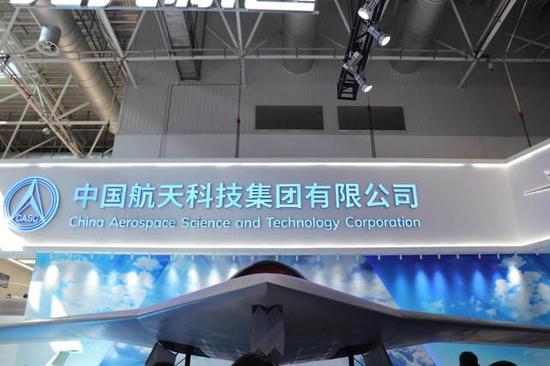
▲“彩虹-7”无人机
在中国众多的出口武器产品中,国产无人机可谓是其中的明星产品之一,且深受国外客户的喜爱,在这当中,大家比较熟悉的“翼龙”系列和“彩虹”系列当中的部分成员甚至在国外客户手里经历了实战的检验。而如果要论目前中国无人处于世界一个什么样的水平,那笔者可以毫不夸张的告诉大家,一流水平,不信,我们就拿“彩虹”家族的最新成员“彩虹-7”来说道说道。
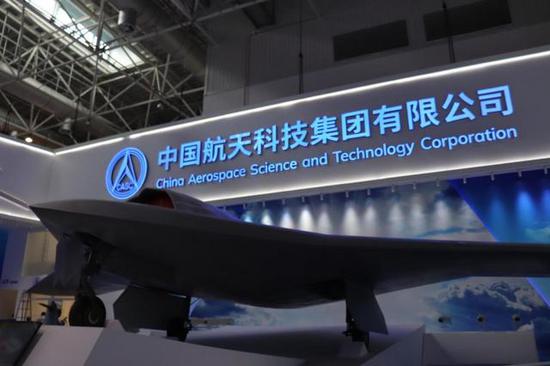
▲“彩虹-7”无人机采用了典型的飞翼气动布局,因此在隐身能力上十分优秀
去年在珠海展示的“彩虹-7”无人机,是航天科技集团全新出品的一款集隐身、高空、高速、长航时等特点为一身的新一代无人机,该机最大的特点就是其采用飞翼结构的气动布局以及内置弹舱,因此具备极佳的隐身性能(RCS估计在0.01平方米以下),故而可以在战时较为轻松的突破敌方密集的防空网,对敌方重要目标进行侦查及打击。“彩虹-7”采用两台不带加力的涡轮风扇发动机,其平均巡航速度可达0.6马赫左右,最高巡航速度则可达到0.75马赫,并可持续飞行约15小时,而根据计算,这样一来其航程起码可以接近1万公里甚至更远,因此可以较为方便的执行较远距离的作战任务,加之其内置弹舱可以携带2吨左右的多种弹药,并可兼容国内研发的各型无人机专用的对地、对舰的炸弹/导弹,未来还可能携带对空作战的无人机空空导弹。
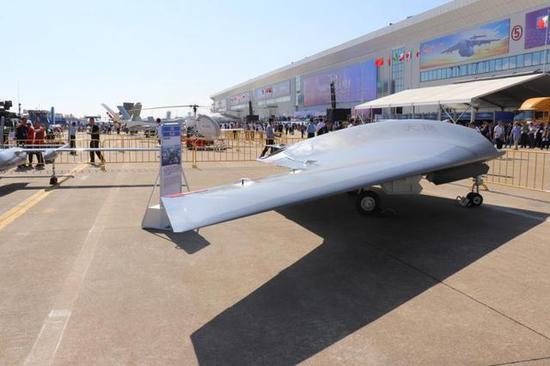
▲“天鹰”无人机同样是一款采用飞翼布局的国产隐身无人机
可以说,“彩虹-7”的性能就算放眼全球,也是目前而言数一数二的高端产品,而类似的无人机,我们还有包括“利剑”,“天鹰”等等,因此可以想见,我们国内的无人机水平有多么高端了。(作者署名:军武次位面)
China stealth drone voyage 10,000 kilometers can easily break through the enemy air defense network
China stealth drone voyage 10,000 kilometers can easily break through the enemy air defense network
28
▲ "Rainbow-7" drone
Among the many export weapons products in China, domestic drones are one of the star products, and they are very popular among foreign customers. Among them, the familiar pterosaur series and the rainbow series Some members have even experienced actual tests in the hands of foreign clients. And if we want to talk about the current level of no one in China, then the author can tell you without any exaggeration, first-class level, do not believe, we will take the "Rainbow" family's newest member "Rainbow-7" to say.
▲ "Rainbow-7" drone uses a typical flying wing aerodynamic layout, so it is very good in stealth ability
The "Rainbow-7" drone, which was exhibited in Zhuhai last year, is a new generation of unmanned aerial vehicles featuring stealth, high-altitude, high-speed and long-haul time. It is the biggest feature of this aircraft. It adopts the aerodynamic layout of the flying wing structure and the built-in bomb bay, so it has excellent stealth performance (RCS is estimated to be less than 0.01 square meters), so it is easier to break through enemy intensive air defense nets during wartime, which is important for the enemy. Targets are investigated and attacked. "Rainbow-7" uses two turbofan engines without a booster. The average cruising speed is about Mach 0.6, the maximum cruising speed is Mach 0.75, and it can last for about 15 hours. According to calculations, such a At least voyages can be close to 10,000 kilometers or more, so it is more convenient to carry out long-distance combat missions, and its built-in bomb bay can carry more than 2 tons of various ammunition, and is compatible with all types of domestic research and development. Man-machine-specific ground-to-ground, ship-to-ship bombs/missiles may also carry air-to-air missiles for air combat.
▲ "Tianying" drone is also a domestic stealth drone with flying wing layout
It can be said that the performance of "Rainbow-7" is even more global, and it is also one of the best high-end products at present. Similar to drones, we also include "Sword", "Eagle" and so on, so we can imagine that How high is the level of our domestic drones. (Author's signature: military martial plane)
中国隐身无人机航程1万公里 可轻松突破敌军防空网
中国隐身无人机航程1万公里 可轻松突破敌军防空网
28

▲“彩虹-7”无人机
在中国众多的出口武器产品中,国产无人机可谓是其中的明星产品之一,且深受国外客户的喜爱,在这当中,大家比较熟悉的“翼龙”系列和“彩虹”系列当中的部分成员甚至在国外客户手里经历了实战的检验。而如果要论目前中国无人处于世界一个什么样的水平,那笔者可以毫不夸张的告诉大家,一流水平,不信,我们就拿“彩虹”家族的最新成员“彩虹-7”来说道说道。

▲“彩虹-7”无人机采用了典型的飞翼气动布局,因此在隐身能力上十分优秀
去年在珠海展示的“彩虹-7”无人机,是航天科技集团全新出品的一款集隐身、高空、高速、长航时等特点为一身的新一代无人机,该机最大的特点就是其采用飞翼结构的气动布局以及内置弹舱,因此具备极佳的隐身性能(RCS估计在0.01平方米以下),故而可以在战时较为轻松的突破敌方密集的防空网,对敌方重要目标进行侦查及打击。“彩虹-7”采用两台不带加力的涡轮风扇发动机,其平均巡航速度可达0.6马赫左右,最高巡航速度则可达到0.75马赫,并可持续飞行约15小时,而根据计算,这样一来其航程起码可以接近1万公里甚至更远,因此可以较为方便的执行较远距离的作战任务,加之其内置弹舱可以携带2吨左右的多种弹药,并可兼容国内研发的各型无人机专用的对地、对舰的炸弹/导弹,未来还可能携带对空作战的无人机空空导弹。

▲“天鹰”无人机同样是一款采用飞翼布局的国产隐身无人机
可以说,“彩虹-7”的性能就算放眼全球,也是目前而言数一数二的高端产品,而类似的无人机,我们还有包括“利剑”,“天鹰”等等,因此可以想见,我们国内的无人机水平有多么高端了。(作者署名:军武次位面)
China stealth drone voyage 10,000 kilometers can easily break through the enemy air defense network
China stealth drone voyage 10,000 kilometers can easily break through the enemy air defense network
28
▲ "Rainbow-7" drone
Among the many export weapons products in China, domestic drones are one of the star products, and they are very popular among foreign customers. Among them, the familiar pterosaur series and the rainbow series Some members have even experienced actual tests in the hands of foreign clients. And if we want to talk about the current level of no one in China, then the author can tell you without any exaggeration, first-class level, do not believe, we will take the "Rainbow" family's newest member "Rainbow-7" to say.
▲ "Rainbow-7" drone uses a typical flying wing aerodynamic layout, so it is very good in stealth ability
The "Rainbow-7" drone, which was exhibited in Zhuhai last year, is a new generation of unmanned aerial vehicles featuring stealth, high-altitude, high-speed and long-haul time. It is the biggest feature of this aircraft. It adopts the aerodynamic layout of the flying wing structure and the built-in bomb bay, so it has excellent stealth performance (RCS is estimated to be less than 0.01 square meters), so it is easier to break through enemy intensive air defense nets during wartime, which is important for the enemy. Targets are investigated and attacked. "Rainbow-7" uses two turbofan engines without a booster. The average cruising speed is about Mach 0.6, the maximum cruising speed is Mach 0.75, and it can last for about 15 hours. According to calculations, such a At least voyages can be close to 10,000 kilometers or more, so it is more convenient to carry out long-distance combat missions, and its built-in bomb bay can carry more than 2 tons of various ammunition, and is compatible with all types of domestic research and development. Man-machine-specific ground-to-ground, ship-to-ship bombs/missiles may also carry air-to-air missiles for air combat.
▲ "Tianying" drone is also a domestic stealth drone with flying wing layout
It can be said that the performance of "Rainbow-7" is even more global, and it is also one of the best high-end products at present. Similar to drones, we also include "Sword", "Eagle" and so on, so we can imagine that How high is the level of our domestic drones. (Author's signature: military martial plane)
- Joined
- Nov 29, 2016
- Messages
- 5,674
- Points
- 63
Typo titile = GOTO USA
- Joined
- Sep 22, 2008
- Messages
- 80,511
- Points
- 113
Why china manufacture these wasteful weapons?nobody in their right mind,would want to invade china.
- Joined
- Jul 25, 2008
- Messages
- 60,263
- Points
- 113
another copycat of u.s. drone technology.
- Joined
- Aug 28, 2011
- Messages
- 3,990
- Points
- 63
China is very confident that even their radar supplied to Pakistan & Myanmar is better than F-35, and that they will have the next version even further exceeding. ABNN India purchased the whole F-16 from Dotard can not match. The simple deal is, your technology fixed Dotard than you are global ace. Don't need to think twice. You are superpower dominance. You can play god, it is up to you to help one Ah Neh cannibalize another, nobody can fucking stop you.
https://mil.news.sina.com.cn/jssd/2019-03-19/doc-ihsxncvh3768575.shtml
枭龙3升级后雷达媲美F35 枭龙4或被打造成四代隐身机
枭龙3升级后雷达媲美F35 枭龙4或被打造成四代隐身机
154
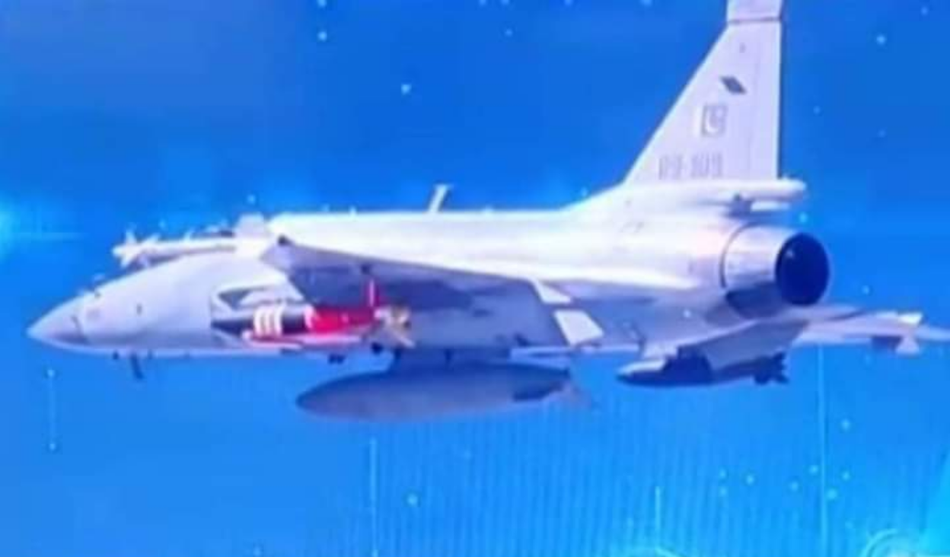
枭龙新獠牙!巴基斯坦JF17战机挂载最新滑翔炸弹测试1/6
查看原图图集模式
据国外社交媒体上出现的照片显示,3月12日,巴基斯坦空军成功使用JF-17战斗机试射了一枚巴基斯坦版本的可调翼面精确制导炸弹,该炸弹被巴基斯坦称为Takbir,是中国LS-6炸弹的巴基斯坦版本。






最近,有关中国空军枭龙3战斗机的消息成为了许多人热议的一个焦点。根据成飞方面的透露,枭龙3战机正在进行大规模的升级。尤其是雷达方面将按照第四代战斗机的雷达进行升级。一旦升级完成,枭龙战机的雷达可以和F35的雷达相媲美。
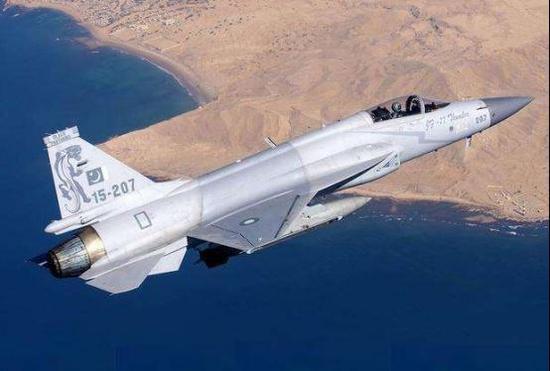 枭龙
枭龙
枭龙和F35的雷达相媲美?这一消息出现后让人倍感疑惑。毕竟枭龙是三代机,F35是四代机,枭龙的雷达怎么可能赶上F35的雷达呢?其实,成飞在改进枭龙战机的时候,会将已有的最新科研成果运用到枭龙的身上。比如歼20的雷达技术!歼20是名副其实的第四代战斗机,其雷达的诸多优秀的能力将直接运用到枭龙战机的身上。比如,对隐身目标的定位探测能力,主动发射电磁波跟踪定位敌机的能力。有了这些能力,枭龙的雷达自然达到了F35的水平。
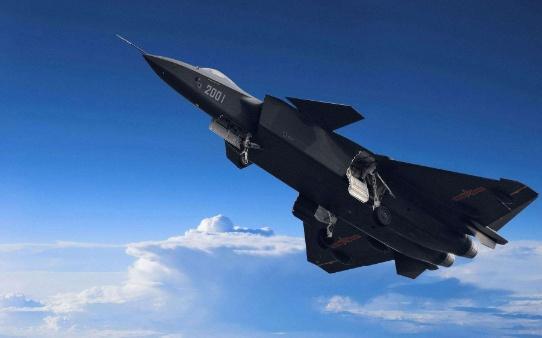 枭龙3的雷达吸收了歼20雷达的能力
枭龙3的雷达吸收了歼20雷达的能力
另外,除了雷达的升级,枭龙3还在战机的头盔瞄准系统方面进行了升级。经过大概以后的枭龙战机,其头盔具备了指哪儿打哪儿的能力。即便面对敌机的红外干扰,枭龙飞行员也能运用头盔指挥空空导弹摆脱敌机的红外干扰,进而命中敌机。
正因为枭龙在多个方面能力的提升,枭龙战机也得到了歼20总师杨伟的肯定。杨伟给枭龙战机的评价是“签一个就值一个”。歼20总师能为枭龙亲自站台,这也就从另一个侧面说明——枭龙战机的性能是多么的优秀。
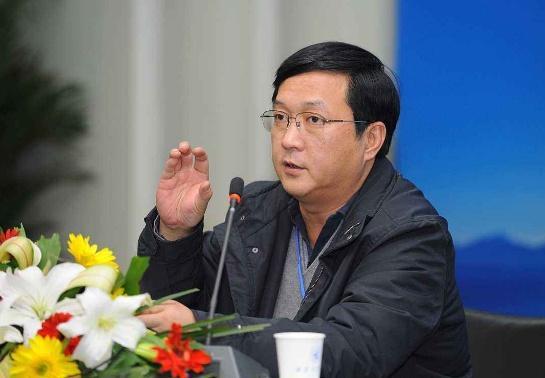 杨伟总师
杨伟总师
随着枭龙3改造大幕的拉开,人们都在纷纷的猜测:枭龙4会改造成什么样子呢?关于枭龙4的升级,现在有两种模式可供参考。第一种模式是枭龙4升级成类似F16V的魔改第三代战斗机。第二种模式是直接升级为第四代战斗机,将枭龙打造成为轻型的隐身版四代机。
让我们看看第一种模式。如果模仿F16V进行魔改,枭龙4的气动变化并不大,但是期内不得雷达会发生较大的变化。F16V的雷达会改造成新型有源相控阵雷达,其超视距空战的能力也会大幅度的提升。如果说枭龙3在空中可以看清隐身战斗机。那么,按照F16V的思路魔改后升级后的枭龙4战机,其雷达将具备探测隐身轰炸机、预警机等空中高威胁高价值目标的能力。说白了,枭龙4战斗机打预警机是非常轻松的。
 枭龙也能按照歼31的思路魔改
枭龙也能按照歼31的思路魔改
除了提升对空探测能力,枭龙4的雷达还将增强对地对海的搜索能力。所以说,枭龙4战机很有可能是一款性能优秀的战斗轰炸机。
除了按照F16V的思路进行魔改,枭龙4还能按照歼31的思路进行魔改,打造一款轻型第四代隐身战斗机。随着枭龙4成为轻型隐身战斗机,国际低端第四代战斗机的市场将被枭龙4所填补。届时,枭龙4将成为适合发展中国家装备和使用的廉价四代隐身机。(作者署名:小小点兵台)
After the upgrade of Xiaolong 3, the radar is comparable to the F35 Snapdragon 4 or is being used as a four-generation stealth machine.
After the upgrade of Xiaolong 3, the radar is comparable to the F35 Snapdragon 4 or is being used as a four-generation stealth machine.
154
枭龙新獠牙! Pakistan JF17 fighter aircraft mounted the latest glide bomb test 1/6
View original image gallery mode
According to photos from foreign social media, on March 12, the Pakistan Air Force successfully tested a Pakistani version of the adjustable airfoil precision guided bomb using the JF-17 fighter jet. The bomb was called Takbir by Pakistan and was China LS. The Pakistani version of the -6 bomb.
Recently, news about the Chinese Air Force's Snapdragon 3 fighter has become a hot topic for many people. According to the disclosure of Chengfei, the Xiaolong 3 fighter is undergoing a large-scale upgrade. In particular, the radar will be upgraded in accordance with the radar of the fourth generation fighter. Once the upgrade is complete, the radar of the Dragon Warrior is comparable to the radar of the F35.
枭龙枭龙
Is the dragon and the F35's radar comparable? This news is very confusing. After all, Xiaolong is a third-generation machine, and F35 is a fourth-generation machine. How can Xiaolong’s radar catch up with the F35 radar? In fact, when flying to improve the dragon fighters, Chengfei will apply the latest scientific research results to Xiaolong. For example, the radar technology of 歼20!歼20 is a veritable fourth-generation fighter, and its excellent radar capabilities will be directly applied to the dragon fighter. For example, the ability to locate and detect stealth targets, actively emit electromagnetic waves to track the ability to locate enemy aircraft. With these capabilities, Xiaolong's radar naturally reached the level of F35.
枭龙3's radar absorbs the 歼20 radar's ability 枭龙3's radar absorbs the 歼20 radar's ability
In addition, in addition to the upgrade of the radar, Xiaolong 3 also upgraded the helmet sighting system of the fighter. After the approximate Dragon Warrior, the helmet has the ability to refer to where to play. Even in the face of the enemy's infrared interference, Xiaolong pilots can use the helmet to command air-to-air missiles to get rid of the enemy's infrared interference, and then hit the enemy plane.
Because of the improvement of the ability of Xiaolong in many aspects, the dragon fighter has also been affirmed by Yang Wei, the chief of the 20th Division. Yang Wei’s evaluation of the dragon fighter is “signing one is worth one”. The 总20 master can personally stand for the dragon, which explains from another side – how excellent the performance of the dragon fighter.
Yang Wei, Chief Engineer, Yang Wei
With the opening of the transformation of Xiaolong 3, people are speculating: What will Xiaolong 4 transform into? Regarding the upgrade of Xiaolong 4, there are now two modes for reference. The first mode is the upgrade of the Snapdragon 4 into a third-generation fighter like the F16V. The second mode is to upgrade directly to the fourth-generation fighter, and to build the dragon into a light stealth version of the fourth-generation machine.
Let us look at the first mode. If you mimic F16V for magic modification, the aerodynamic change of Xiaolong 4 is not large, but the radar will not change greatly during the period. The F16V radar will be transformed into a new active phased array radar, and its ability to over-the-horizon air combat will be greatly improved. If you say that Xiaolong 3 can see the stealth fighter in the air. Then, according to the F16V's idea, after the upgrade, the Snapdragon 4 fighter will have the ability to detect high-threat, high-value targets such as stealth bombers and early warning aircraft. To put it bluntly, the 枭龙4 fighter is very easy to play the early warning machine.
Xiaolong can also change the dragon in accordance with the idea of 歼31, and can also change the magic of the 歼31.
In addition to improving the air-to-air detection capability, the Snapdragon 4 radar will also enhance the search capability for the Earth to the sea. Therefore, the Dragon 4 fighter is likely to be a good performance fighter bomber.
In addition to the magic change according to the F16V idea, Xiaolong 4 can also be modified according to the idea of 歼31 to create a light fourth-generation stealth fighter. As the Xiaolong 4 becomes a light stealth fighter, the market of the international low-end fourth-generation fighter will be filled by Xiaolong 4. By then, Xiaolong 4 will become a cheap four-generation stealth machine suitable for equipment and use in developing countries. (Author's signature: Little Point)
https://mil.news.sina.com.cn/jssd/2019-03-19/doc-ihsxncvh3768575.shtml
枭龙3升级后雷达媲美F35 枭龙4或被打造成四代隐身机
枭龙3升级后雷达媲美F35 枭龙4或被打造成四代隐身机
154

枭龙新獠牙!巴基斯坦JF17战机挂载最新滑翔炸弹测试1/6
查看原图图集模式
据国外社交媒体上出现的照片显示,3月12日,巴基斯坦空军成功使用JF-17战斗机试射了一枚巴基斯坦版本的可调翼面精确制导炸弹,该炸弹被巴基斯坦称为Takbir,是中国LS-6炸弹的巴基斯坦版本。






最近,有关中国空军枭龙3战斗机的消息成为了许多人热议的一个焦点。根据成飞方面的透露,枭龙3战机正在进行大规模的升级。尤其是雷达方面将按照第四代战斗机的雷达进行升级。一旦升级完成,枭龙战机的雷达可以和F35的雷达相媲美。

枭龙和F35的雷达相媲美?这一消息出现后让人倍感疑惑。毕竟枭龙是三代机,F35是四代机,枭龙的雷达怎么可能赶上F35的雷达呢?其实,成飞在改进枭龙战机的时候,会将已有的最新科研成果运用到枭龙的身上。比如歼20的雷达技术!歼20是名副其实的第四代战斗机,其雷达的诸多优秀的能力将直接运用到枭龙战机的身上。比如,对隐身目标的定位探测能力,主动发射电磁波跟踪定位敌机的能力。有了这些能力,枭龙的雷达自然达到了F35的水平。

另外,除了雷达的升级,枭龙3还在战机的头盔瞄准系统方面进行了升级。经过大概以后的枭龙战机,其头盔具备了指哪儿打哪儿的能力。即便面对敌机的红外干扰,枭龙飞行员也能运用头盔指挥空空导弹摆脱敌机的红外干扰,进而命中敌机。
正因为枭龙在多个方面能力的提升,枭龙战机也得到了歼20总师杨伟的肯定。杨伟给枭龙战机的评价是“签一个就值一个”。歼20总师能为枭龙亲自站台,这也就从另一个侧面说明——枭龙战机的性能是多么的优秀。

随着枭龙3改造大幕的拉开,人们都在纷纷的猜测:枭龙4会改造成什么样子呢?关于枭龙4的升级,现在有两种模式可供参考。第一种模式是枭龙4升级成类似F16V的魔改第三代战斗机。第二种模式是直接升级为第四代战斗机,将枭龙打造成为轻型的隐身版四代机。
让我们看看第一种模式。如果模仿F16V进行魔改,枭龙4的气动变化并不大,但是期内不得雷达会发生较大的变化。F16V的雷达会改造成新型有源相控阵雷达,其超视距空战的能力也会大幅度的提升。如果说枭龙3在空中可以看清隐身战斗机。那么,按照F16V的思路魔改后升级后的枭龙4战机,其雷达将具备探测隐身轰炸机、预警机等空中高威胁高价值目标的能力。说白了,枭龙4战斗机打预警机是非常轻松的。

除了提升对空探测能力,枭龙4的雷达还将增强对地对海的搜索能力。所以说,枭龙4战机很有可能是一款性能优秀的战斗轰炸机。
除了按照F16V的思路进行魔改,枭龙4还能按照歼31的思路进行魔改,打造一款轻型第四代隐身战斗机。随着枭龙4成为轻型隐身战斗机,国际低端第四代战斗机的市场将被枭龙4所填补。届时,枭龙4将成为适合发展中国家装备和使用的廉价四代隐身机。(作者署名:小小点兵台)
After the upgrade of Xiaolong 3, the radar is comparable to the F35 Snapdragon 4 or is being used as a four-generation stealth machine.
After the upgrade of Xiaolong 3, the radar is comparable to the F35 Snapdragon 4 or is being used as a four-generation stealth machine.
154
枭龙新獠牙! Pakistan JF17 fighter aircraft mounted the latest glide bomb test 1/6
View original image gallery mode
According to photos from foreign social media, on March 12, the Pakistan Air Force successfully tested a Pakistani version of the adjustable airfoil precision guided bomb using the JF-17 fighter jet. The bomb was called Takbir by Pakistan and was China LS. The Pakistani version of the -6 bomb.
Recently, news about the Chinese Air Force's Snapdragon 3 fighter has become a hot topic for many people. According to the disclosure of Chengfei, the Xiaolong 3 fighter is undergoing a large-scale upgrade. In particular, the radar will be upgraded in accordance with the radar of the fourth generation fighter. Once the upgrade is complete, the radar of the Dragon Warrior is comparable to the radar of the F35.
枭龙枭龙
Is the dragon and the F35's radar comparable? This news is very confusing. After all, Xiaolong is a third-generation machine, and F35 is a fourth-generation machine. How can Xiaolong’s radar catch up with the F35 radar? In fact, when flying to improve the dragon fighters, Chengfei will apply the latest scientific research results to Xiaolong. For example, the radar technology of 歼20!歼20 is a veritable fourth-generation fighter, and its excellent radar capabilities will be directly applied to the dragon fighter. For example, the ability to locate and detect stealth targets, actively emit electromagnetic waves to track the ability to locate enemy aircraft. With these capabilities, Xiaolong's radar naturally reached the level of F35.
枭龙3's radar absorbs the 歼20 radar's ability 枭龙3's radar absorbs the 歼20 radar's ability
In addition, in addition to the upgrade of the radar, Xiaolong 3 also upgraded the helmet sighting system of the fighter. After the approximate Dragon Warrior, the helmet has the ability to refer to where to play. Even in the face of the enemy's infrared interference, Xiaolong pilots can use the helmet to command air-to-air missiles to get rid of the enemy's infrared interference, and then hit the enemy plane.
Because of the improvement of the ability of Xiaolong in many aspects, the dragon fighter has also been affirmed by Yang Wei, the chief of the 20th Division. Yang Wei’s evaluation of the dragon fighter is “signing one is worth one”. The 总20 master can personally stand for the dragon, which explains from another side – how excellent the performance of the dragon fighter.
Yang Wei, Chief Engineer, Yang Wei
With the opening of the transformation of Xiaolong 3, people are speculating: What will Xiaolong 4 transform into? Regarding the upgrade of Xiaolong 4, there are now two modes for reference. The first mode is the upgrade of the Snapdragon 4 into a third-generation fighter like the F16V. The second mode is to upgrade directly to the fourth-generation fighter, and to build the dragon into a light stealth version of the fourth-generation machine.
Let us look at the first mode. If you mimic F16V for magic modification, the aerodynamic change of Xiaolong 4 is not large, but the radar will not change greatly during the period. The F16V radar will be transformed into a new active phased array radar, and its ability to over-the-horizon air combat will be greatly improved. If you say that Xiaolong 3 can see the stealth fighter in the air. Then, according to the F16V's idea, after the upgrade, the Snapdragon 4 fighter will have the ability to detect high-threat, high-value targets such as stealth bombers and early warning aircraft. To put it bluntly, the 枭龙4 fighter is very easy to play the early warning machine.
Xiaolong can also change the dragon in accordance with the idea of 歼31, and can also change the magic of the 歼31.
In addition to improving the air-to-air detection capability, the Snapdragon 4 radar will also enhance the search capability for the Earth to the sea. Therefore, the Dragon 4 fighter is likely to be a good performance fighter bomber.
In addition to the magic change according to the F16V idea, Xiaolong 4 can also be modified according to the idea of 歼31 to create a light fourth-generation stealth fighter. As the Xiaolong 4 becomes a light stealth fighter, the market of the international low-end fourth-generation fighter will be filled by Xiaolong 4. By then, Xiaolong 4 will become a cheap four-generation stealth machine suitable for equipment and use in developing countries. (Author's signature: Little Point)
- Joined
- Aug 28, 2011
- Messages
- 3,990
- Points
- 63
Why china manufacture these wasteful weapons?nobody in their right mind,would want to invade china.
Don't get FOOLED by modern civilization and the misleading word "DEFENSE" - Oldest Idiom said Offense is best Defense. But that is still the childish and civilized attitude unfit for survival today. Today it would be PURELY and SINGULARLY just on ELIMINATION to be the ONLY PRACTICAL SURVIVAL MEANS.
If there are too many other survivors, then ALL your survival efforts for EVERYONE - including all friends or foe and yourself are ALL FRUITLESS! Because there WON'T BE ENOUGH RESOURCES to let that many live. ONLY ADEQUATE ELIMINATION will qualify survival for just only that tiny amount of GLOBAL POPULATION - limited by amount of remaining resources.
It is also LIMITED by time, as more time got wasted before the mass carnage elimination, more resources are gone, and the timing window will be close, leaving ABSOLUTELY NOTHING BUT JUST INEVITABLE TOTAL EXTINCTION.
- Joined
- Aug 28, 2011
- Messages
- 3,990
- Points
- 63
https://mil.news.sina.com.cn/jssd/2019-03-19/doc-ihsxncvh3861900.shtml
中国柔性屏获重大突破 贴满全身就能将战机光学隐身
中国柔性屏获重大突破 贴满全身就能将战机光学隐身
24
近几年,尤其是近两年以来,我国柔性显示屏技术发展迅速。去年年末,深圳的柔宇科技率先在北京推出了世界首台柔性屏手机。随后华为也在今年2月展出了柔性屏可折叠手机。虽然与韩国三星公司的折叠屏手机同期发布,但其技术水平更加成熟。柔宇科技的折叠屏是自行研发成功的,华为则是与中国显示面板生产龙头企业京东方合作,历时3年研发成功。

柔宇科技总裁刘自鸿介绍柔性屏手机
除上述两家公司,清华大学、中航工业以及TCL集团等也投入到了柔性显示屏的研发当中,并获得成功。有军事专家认为,柔性显示屏这一技术不仅民用市场很广阔,在军事领域的应用也有可能带来一场天翻地覆的变革。
军方一直在追求光学隐身。运用迷彩伪装是视觉隐身的一种,主要应用方式即士兵的作战服装以及武器的外表油漆涂装。但其应用大致仅局限于此,无法灵活适应不同的作战环境和作战方式。倘若将柔性显示屏技术运用到士兵的作战服装上,就有可能真正实现光学隐身。目前柔宇公司已经研制出了运用柔性显示技术的服饰,比如衣服、裤子、背包等,这说明以后此一技术运用到士兵作战服上是很有可能的。
我国隐形技术不断发展,红外隐身以及雷达技术已经相当完善,未来有可能出现的情形是敌我双方隐形战机远距离无法发现对方,只能进行近距离格斗。这时,如果我方飞机能够运用此一技术实现光学隐身,致使对方无法准确判断我方飞机位置和飞行路线,将会使我军空中作战的获胜概率大幅提高。
飞机的座舱盖与风挡是飞行员观察环境的最佳路径,可同时也是相当大的雷达反射区。目前战机的座舱是气泡型,这使飞行员的观察非常方便,但是也破坏了飞机的流线外形,增加了飞行阻力。如果未来能将柔性显示屏技术运用于此,便可大大方便飞行员的观察环境;再配上彩色夜视器,那么夜间的观察图像则可以与白天无异。
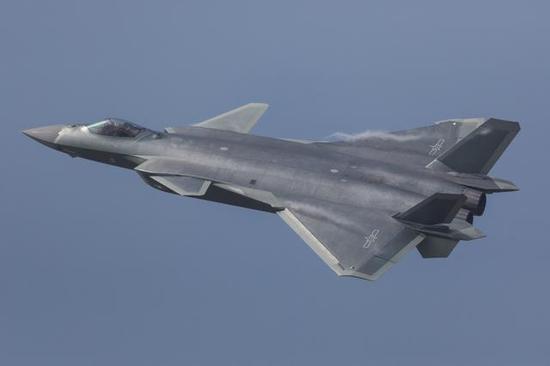
歼20战斗机
同时,在信息化改造武器装备的过程中,也可以充分利用此一技术。为节省空间与提高作战性能,士兵的作战空间都比较狭小。那么使用柔性屏代替平板显示屏,使之贴附在不规则空间或曲面上,就即节省了空间,又可以随时随地显示。柔宇科技已经研制出了类似的产品。相信,该技术运用到武器装备的信息化改造上的时间也指日可待。(作者署名:舰载武器)
China's flexible screen has made a major breakthrough.
China's flexible screen has made a major breakthrough.
twenty four
In recent years, especially in the past two years, China's flexible display technology has developed rapidly. At the end of last year, Shenzhen's Rouyu Technology took the lead in launching the world's first flexible screen mobile phone in Beijing. Then Huawei also exhibited a flexible screen foldable mobile phone in February this year. Although it was released in the same period as South Korea's Samsung's folding screen mobile phone, its technical level is more mature. The folding screen of Rouyu Technology was developed by itself. Huawei cooperated with BOE, the leading manufacturer of display panels in China, and it has been successfully developed for three years.
Liu Zihong, President of Rouyu Technology, introduced flexible screen mobile phone
In addition to the above two companies, Tsinghua University, AVIC and TCL Group have also invested in the development of flexible displays and achieved success. Some military experts believe that the flexible display technology is not only a very popular civil market, but also a revolutionary application in the military field.
The military has been pursuing optical stealth. The use of camouflage camouflage is a kind of visual stealth. The main application method is the soldier's combat clothing and the exterior paint painting of the weapon. However, its application is generally limited to this, and it is not flexible enough to adapt to different operational environments and operational methods. If flexible display technology is applied to soldiers' combat clothing, it is possible to achieve optical stealth. At present, Rouyu has developed clothing that uses flexible display technology, such as clothes, pants, backpacks, etc. This shows that this technology is very likely to be applied to soldiers' combat uniforms.
China's stealth technology continues to develop, infrared stealth and radar technology has been quite perfect. In the future, it may happen that the stealth fighters of both the enemy and the enemy cannot find each other remotely, and can only fight at close range. At this time, if our aircraft can use this technology to achieve optical stealth, so that the other party can not accurately determine the position and flight route of our aircraft, it will greatly increase the probability of winning our air combat.
The cockpit and windshield of the aircraft are the best path for the pilot to observe the environment and can also be a fairly large radar reflection zone. At present, the cockpit of the fighter is a bubble type, which makes the pilot's observation very convenient, but also destroys the aircraft's streamline shape and increases the flight resistance. If the flexible display technology can be used in the future, the pilot's observation environment can be greatly facilitated; and with the color night vision device, the night observation image can be no different from the daytime.
歼20 fighter
At the same time, this technology can also be fully utilized in the process of information transformation of weapons and equipment. In order to save space and improve combat performance, soldiers have relatively small combat space. Then use a flexible screen instead of a flat panel display to attach it to an irregular space or surface, which saves space and can be displayed anytime, anywhere. Softwoo Technology has developed a similar product. I believe that the time it takes to apply this technology to the information transformation of weapons and equipment is just around the corner. (Author's signature: shipborne weapons)
中国柔性屏获重大突破 贴满全身就能将战机光学隐身
中国柔性屏获重大突破 贴满全身就能将战机光学隐身
24
近几年,尤其是近两年以来,我国柔性显示屏技术发展迅速。去年年末,深圳的柔宇科技率先在北京推出了世界首台柔性屏手机。随后华为也在今年2月展出了柔性屏可折叠手机。虽然与韩国三星公司的折叠屏手机同期发布,但其技术水平更加成熟。柔宇科技的折叠屏是自行研发成功的,华为则是与中国显示面板生产龙头企业京东方合作,历时3年研发成功。

柔宇科技总裁刘自鸿介绍柔性屏手机
除上述两家公司,清华大学、中航工业以及TCL集团等也投入到了柔性显示屏的研发当中,并获得成功。有军事专家认为,柔性显示屏这一技术不仅民用市场很广阔,在军事领域的应用也有可能带来一场天翻地覆的变革。
军方一直在追求光学隐身。运用迷彩伪装是视觉隐身的一种,主要应用方式即士兵的作战服装以及武器的外表油漆涂装。但其应用大致仅局限于此,无法灵活适应不同的作战环境和作战方式。倘若将柔性显示屏技术运用到士兵的作战服装上,就有可能真正实现光学隐身。目前柔宇公司已经研制出了运用柔性显示技术的服饰,比如衣服、裤子、背包等,这说明以后此一技术运用到士兵作战服上是很有可能的。
我国隐形技术不断发展,红外隐身以及雷达技术已经相当完善,未来有可能出现的情形是敌我双方隐形战机远距离无法发现对方,只能进行近距离格斗。这时,如果我方飞机能够运用此一技术实现光学隐身,致使对方无法准确判断我方飞机位置和飞行路线,将会使我军空中作战的获胜概率大幅提高。
飞机的座舱盖与风挡是飞行员观察环境的最佳路径,可同时也是相当大的雷达反射区。目前战机的座舱是气泡型,这使飞行员的观察非常方便,但是也破坏了飞机的流线外形,增加了飞行阻力。如果未来能将柔性显示屏技术运用于此,便可大大方便飞行员的观察环境;再配上彩色夜视器,那么夜间的观察图像则可以与白天无异。

歼20战斗机
同时,在信息化改造武器装备的过程中,也可以充分利用此一技术。为节省空间与提高作战性能,士兵的作战空间都比较狭小。那么使用柔性屏代替平板显示屏,使之贴附在不规则空间或曲面上,就即节省了空间,又可以随时随地显示。柔宇科技已经研制出了类似的产品。相信,该技术运用到武器装备的信息化改造上的时间也指日可待。(作者署名:舰载武器)
China's flexible screen has made a major breakthrough.
China's flexible screen has made a major breakthrough.
twenty four
In recent years, especially in the past two years, China's flexible display technology has developed rapidly. At the end of last year, Shenzhen's Rouyu Technology took the lead in launching the world's first flexible screen mobile phone in Beijing. Then Huawei also exhibited a flexible screen foldable mobile phone in February this year. Although it was released in the same period as South Korea's Samsung's folding screen mobile phone, its technical level is more mature. The folding screen of Rouyu Technology was developed by itself. Huawei cooperated with BOE, the leading manufacturer of display panels in China, and it has been successfully developed for three years.
Liu Zihong, President of Rouyu Technology, introduced flexible screen mobile phone
In addition to the above two companies, Tsinghua University, AVIC and TCL Group have also invested in the development of flexible displays and achieved success. Some military experts believe that the flexible display technology is not only a very popular civil market, but also a revolutionary application in the military field.
The military has been pursuing optical stealth. The use of camouflage camouflage is a kind of visual stealth. The main application method is the soldier's combat clothing and the exterior paint painting of the weapon. However, its application is generally limited to this, and it is not flexible enough to adapt to different operational environments and operational methods. If flexible display technology is applied to soldiers' combat clothing, it is possible to achieve optical stealth. At present, Rouyu has developed clothing that uses flexible display technology, such as clothes, pants, backpacks, etc. This shows that this technology is very likely to be applied to soldiers' combat uniforms.
China's stealth technology continues to develop, infrared stealth and radar technology has been quite perfect. In the future, it may happen that the stealth fighters of both the enemy and the enemy cannot find each other remotely, and can only fight at close range. At this time, if our aircraft can use this technology to achieve optical stealth, so that the other party can not accurately determine the position and flight route of our aircraft, it will greatly increase the probability of winning our air combat.
The cockpit and windshield of the aircraft are the best path for the pilot to observe the environment and can also be a fairly large radar reflection zone. At present, the cockpit of the fighter is a bubble type, which makes the pilot's observation very convenient, but also destroys the aircraft's streamline shape and increases the flight resistance. If the flexible display technology can be used in the future, the pilot's observation environment can be greatly facilitated; and with the color night vision device, the night observation image can be no different from the daytime.
歼20 fighter
At the same time, this technology can also be fully utilized in the process of information transformation of weapons and equipment. In order to save space and improve combat performance, soldiers have relatively small combat space. Then use a flexible screen instead of a flat panel display to attach it to an irregular space or surface, which saves space and can be displayed anytime, anywhere. Softwoo Technology has developed a similar product. I believe that the time it takes to apply this technology to the information transformation of weapons and equipment is just around the corner. (Author's signature: shipborne weapons)
- Joined
- Aug 28, 2011
- Messages
- 3,990
- Points
- 63
https://www.rt.com/news/454601-pakistan-chinese-missile-systems/
HomeWorld News
Pakistan deploys Chinese air defense systems, more attack & surveillance drones at India’s border
Published time: 24 Mar, 2019 02:51 Edited time: 24 Mar, 2019 04:01
Get short URL
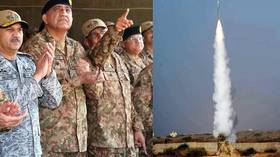
FILE PHOTO: Test firing of LY-80 © ISPR of the Pakistan Armed Forces
Five units of LY-80 (HQ-16) surface-to-air missiles (SAM) and IBIS-150 air defense surveillance radar units were spread across Pakistan following New Delhi’s strike last month against terrorists in Balakot, deep inside Pakistan’s territory, Indian news outlets reported, citing the latest intelligence reports.
Besides SAM systems, Islamabad also reportedly has deployed additional Chinese-made Rainbow CH-4 and CH-5 drones, for surveillance and even potential strikes at the Kashmir Line of Control. At least three of those drones have been shot down following the February 26 strike against the Jaish-e-Mohammed (JeM) terrorist camp.
The Indian raid inside Pakistani territory came in response to the Pulwama attack on February 14, in which a Kashmiri member of a Pakistan-based militant group killed 40 Indian paramilitary police in a suicide bombing. That attack was soon followed by a mid-air dogfight, with one of India's MiG-21 Bison shot down by Pakistani jets. The Indian pilot, who was captured by Pakistan, was later returned to India in what Islamabad called a “peace gesture.”
Also on rt.com Indian Air Force seeks ‘fresh replenishments’ of missiles to counter Pakistan’s F-16s – report
Think your friends would be interested? Share this story!
HomeWorld News
Pakistan deploys Chinese air defense systems, more attack & surveillance drones at India’s border
Published time: 24 Mar, 2019 02:51 Edited time: 24 Mar, 2019 04:01
Get short URL

FILE PHOTO: Test firing of LY-80 © ISPR of the Pakistan Armed Forces
- 1055
Five units of LY-80 (HQ-16) surface-to-air missiles (SAM) and IBIS-150 air defense surveillance radar units were spread across Pakistan following New Delhi’s strike last month against terrorists in Balakot, deep inside Pakistan’s territory, Indian news outlets reported, citing the latest intelligence reports.
Besides SAM systems, Islamabad also reportedly has deployed additional Chinese-made Rainbow CH-4 and CH-5 drones, for surveillance and even potential strikes at the Kashmir Line of Control. At least three of those drones have been shot down following the February 26 strike against the Jaish-e-Mohammed (JeM) terrorist camp.
The Indian raid inside Pakistani territory came in response to the Pulwama attack on February 14, in which a Kashmiri member of a Pakistan-based militant group killed 40 Indian paramilitary police in a suicide bombing. That attack was soon followed by a mid-air dogfight, with one of India's MiG-21 Bison shot down by Pakistani jets. The Indian pilot, who was captured by Pakistan, was later returned to India in what Islamabad called a “peace gesture.”
Also on rt.com Indian Air Force seeks ‘fresh replenishments’ of missiles to counter Pakistan’s F-16s – report
Think your friends would be interested? Share this story!
Similar threads
- Replies
- 3
- Views
- 201
- Replies
- 0
- Views
- 229

